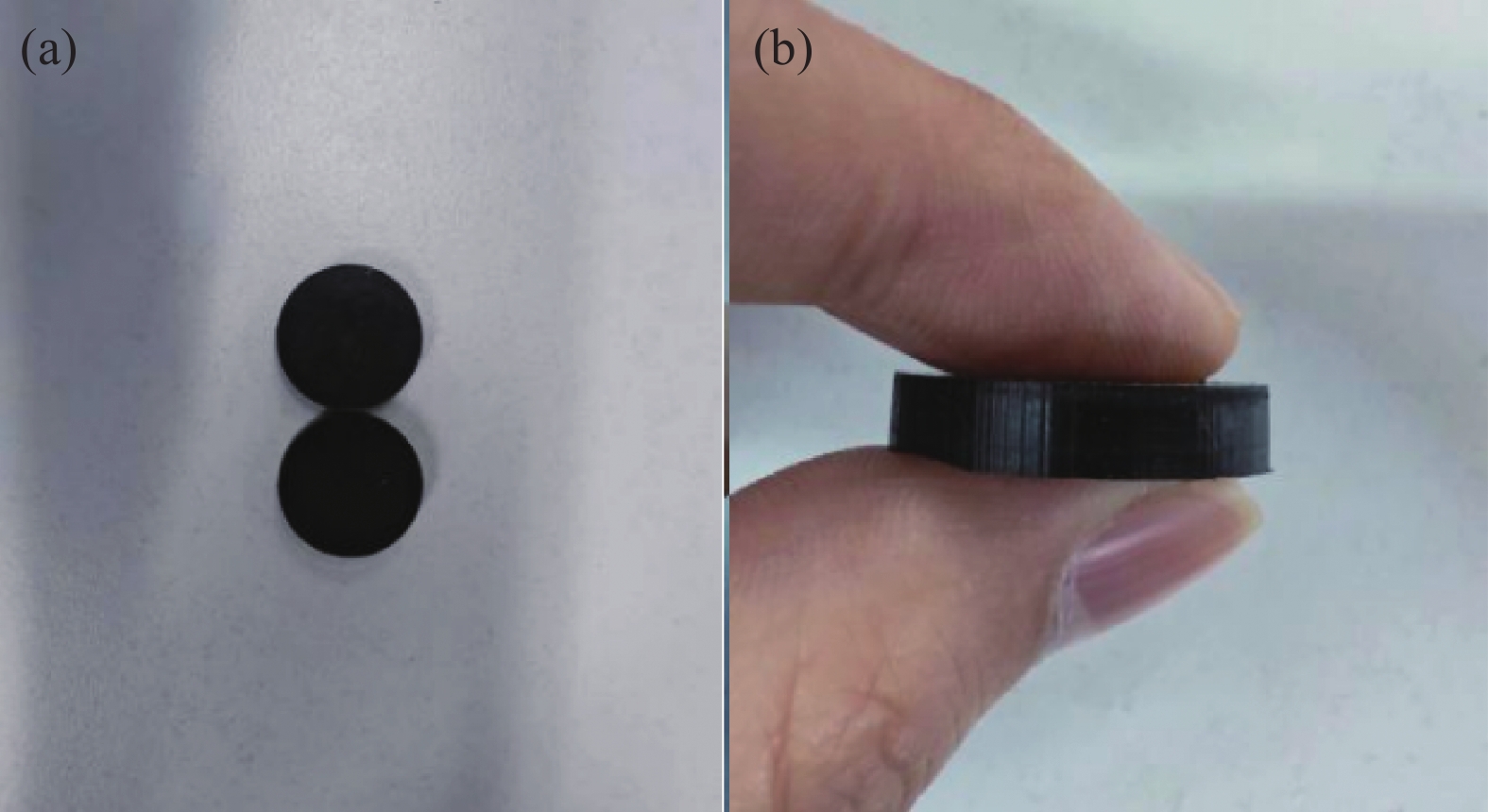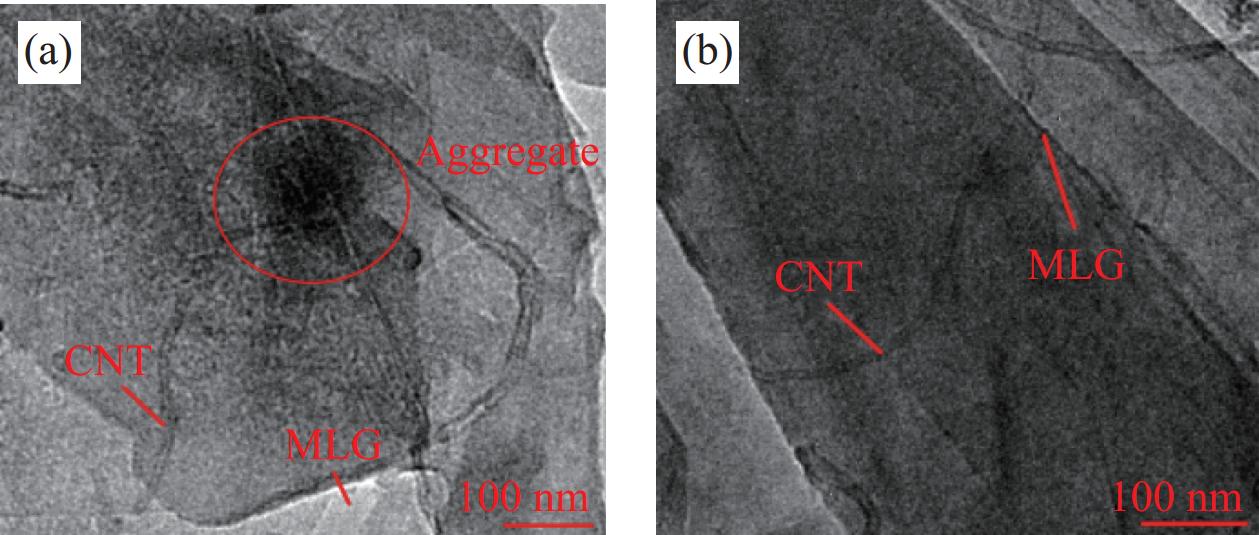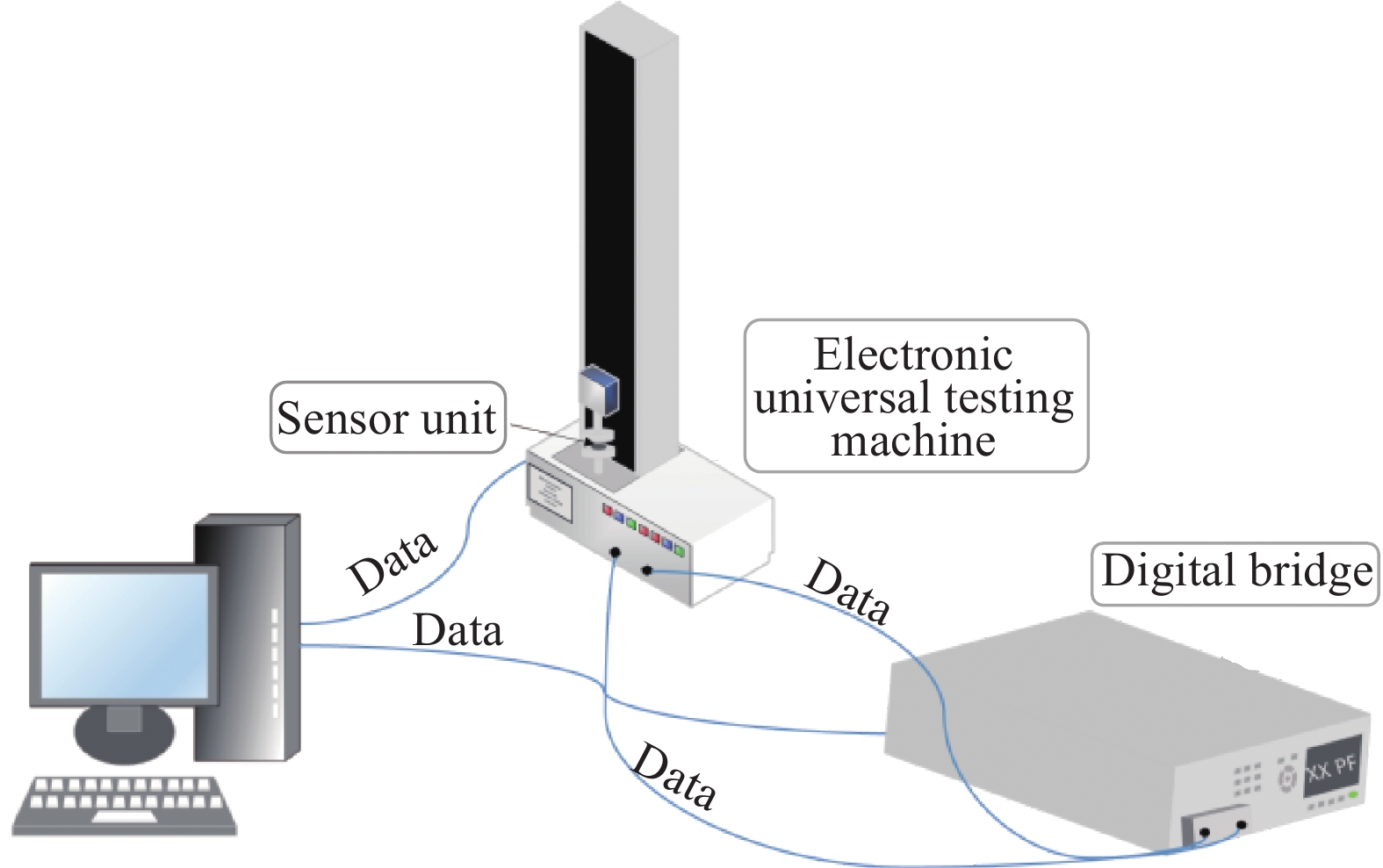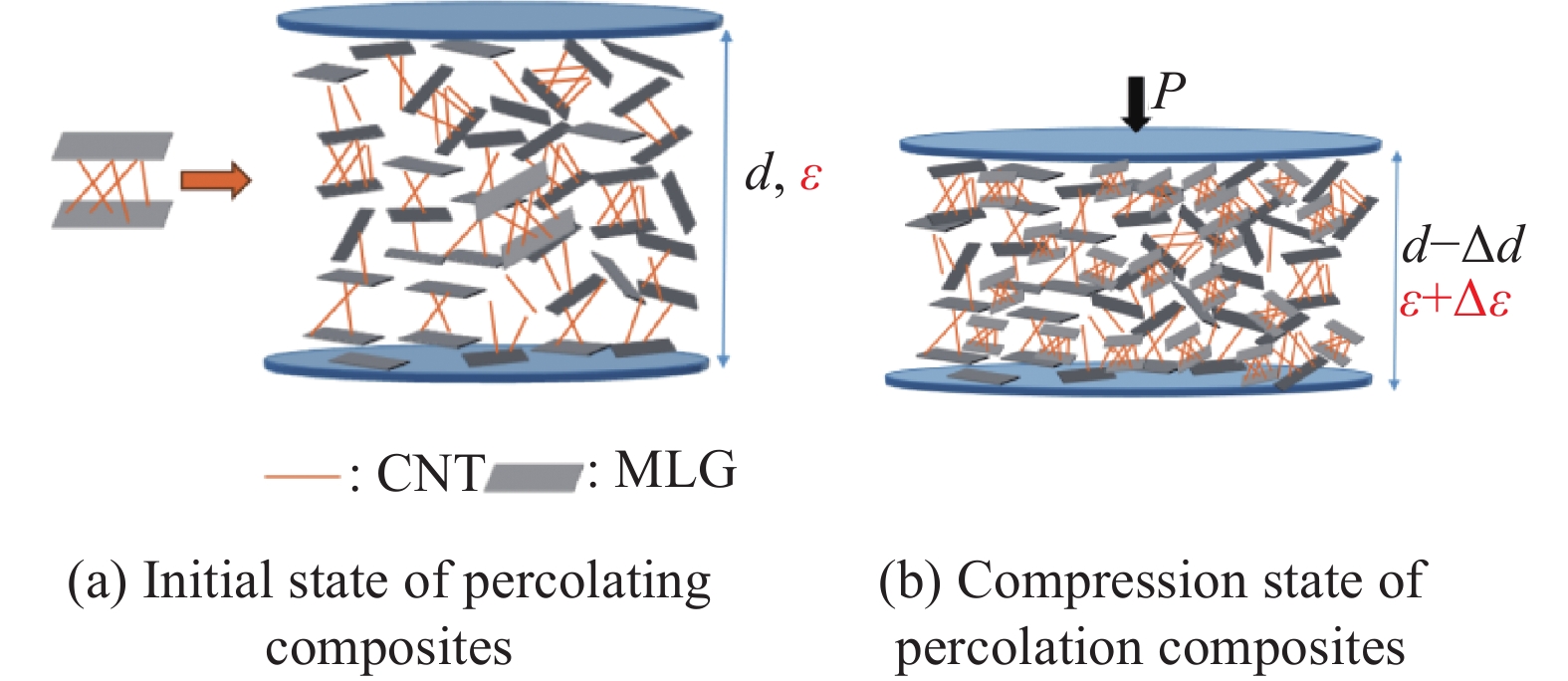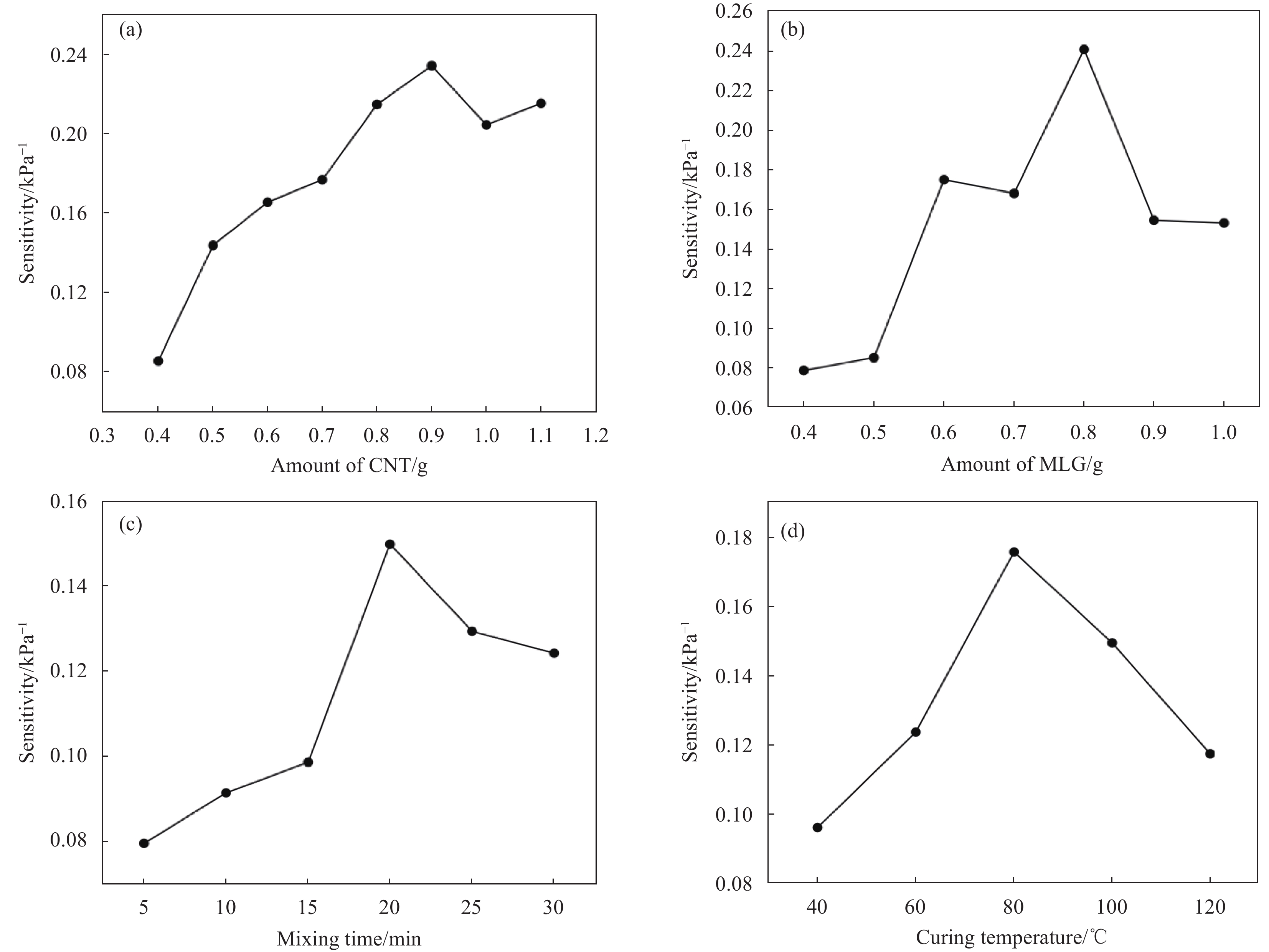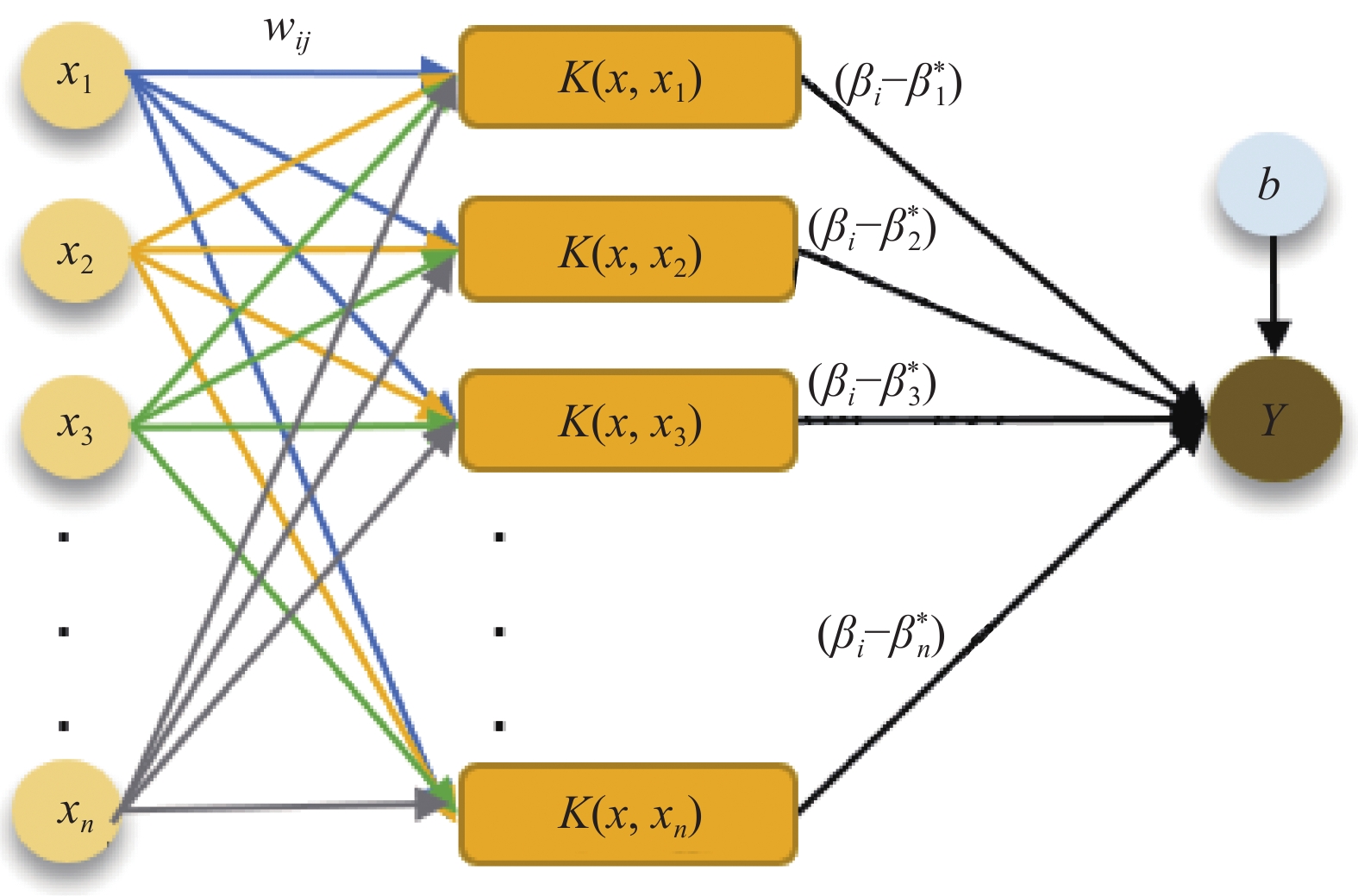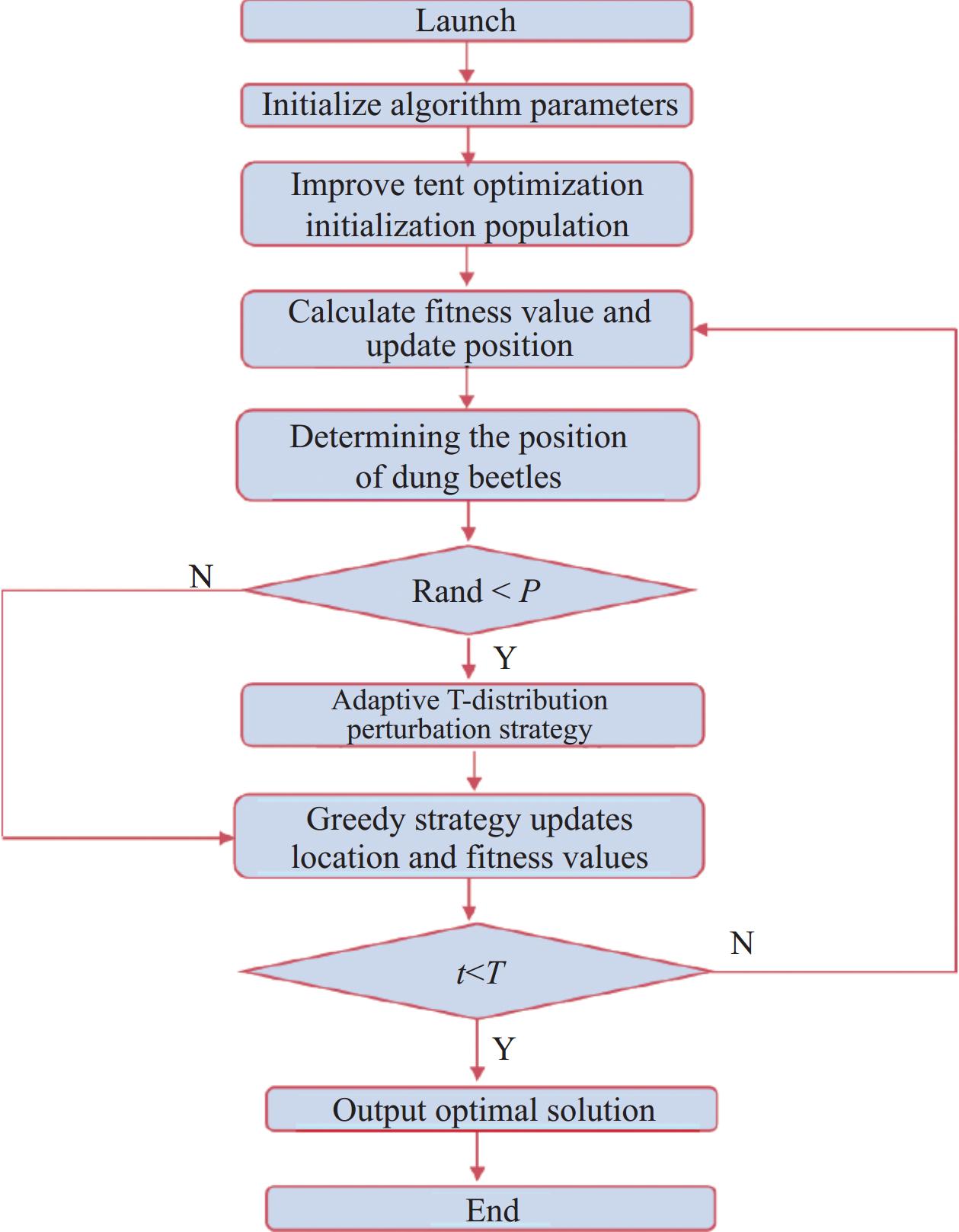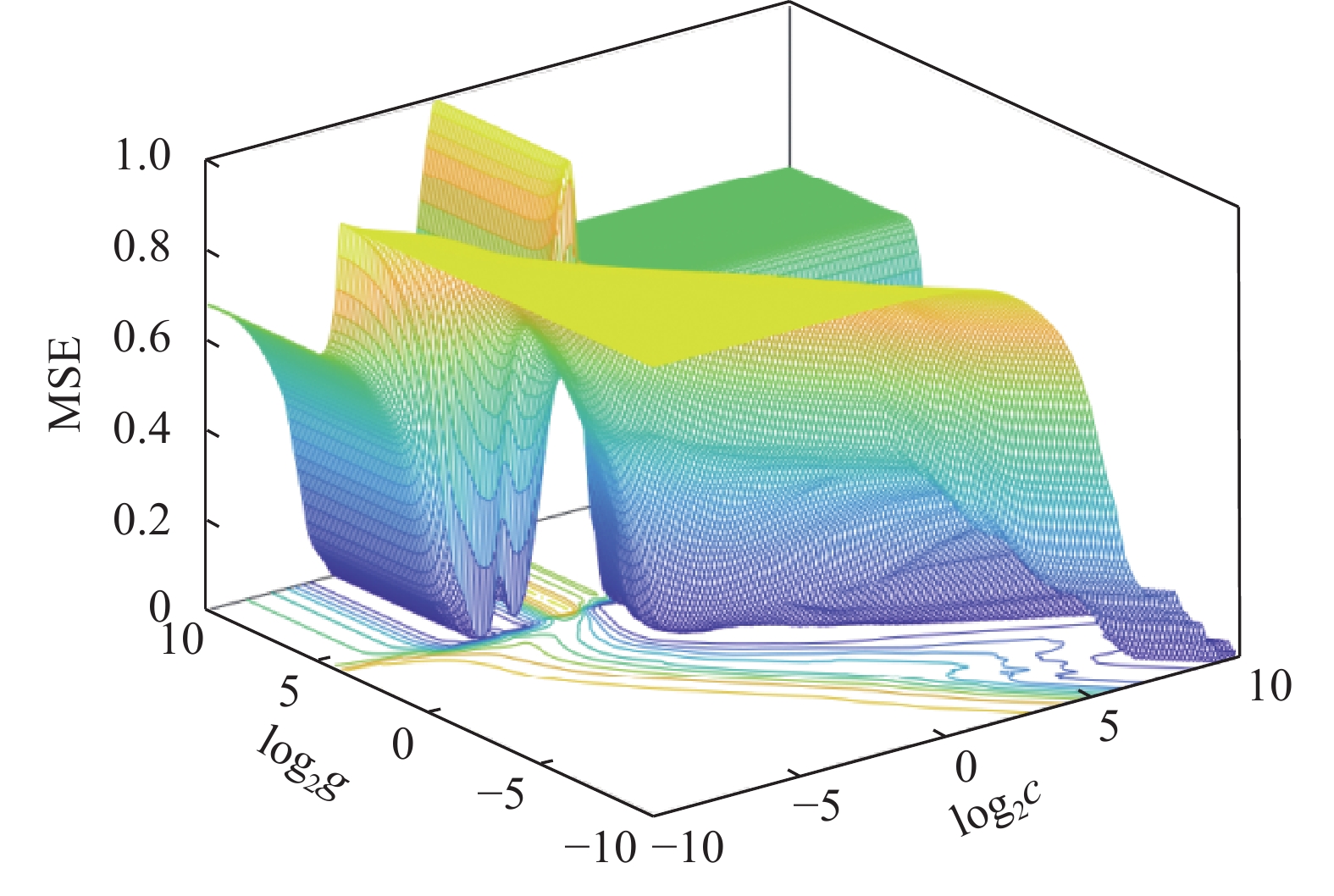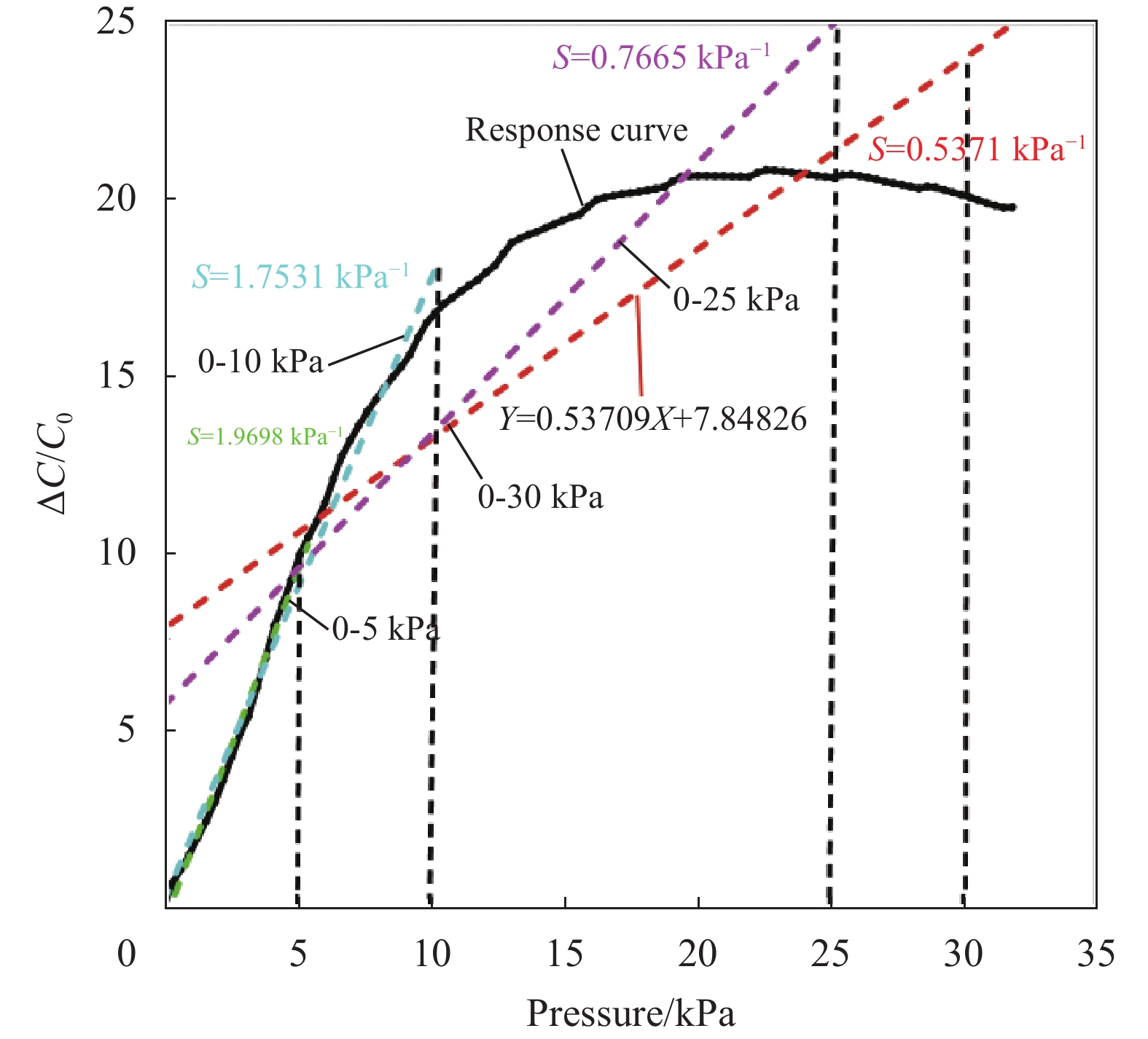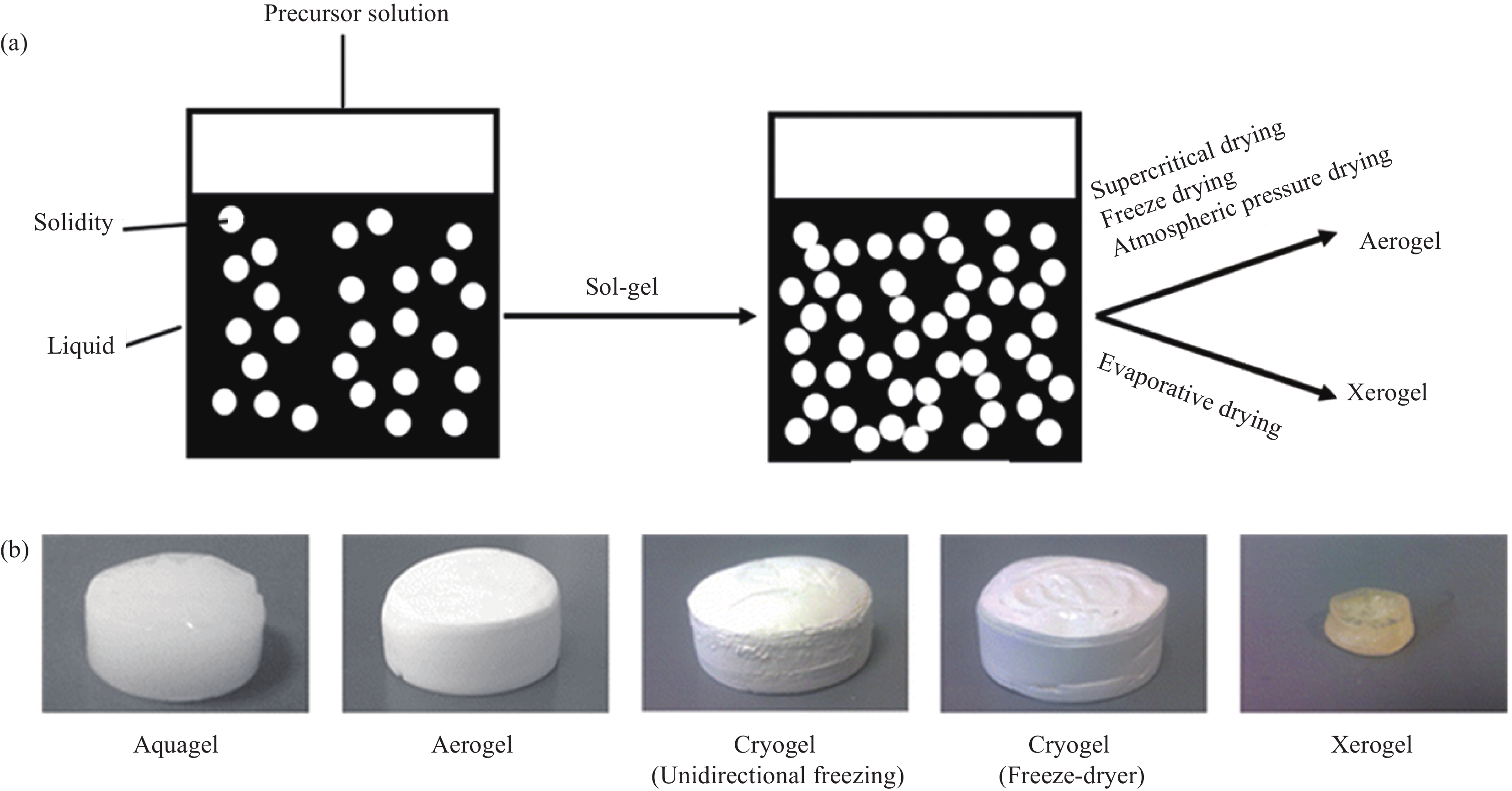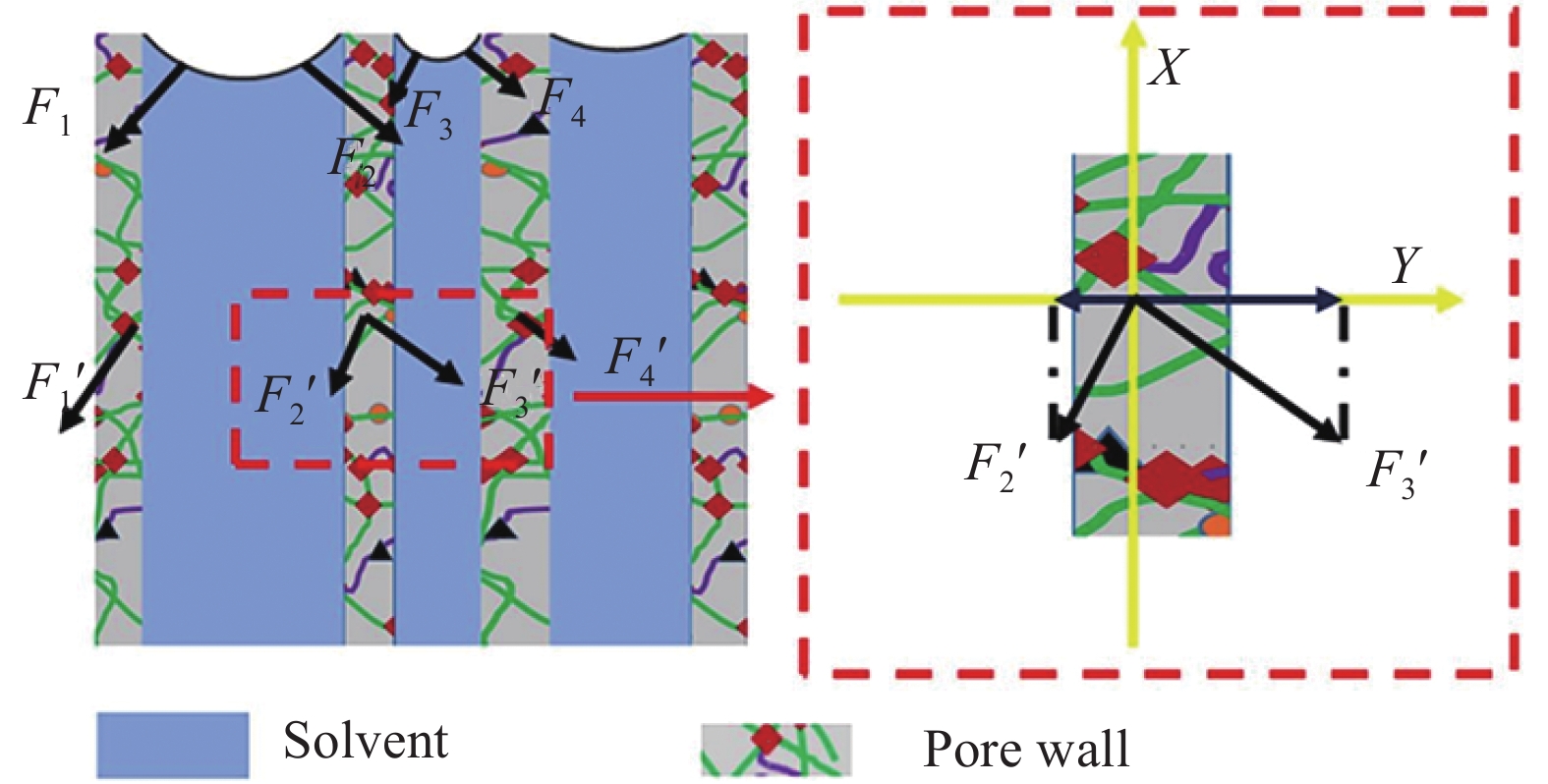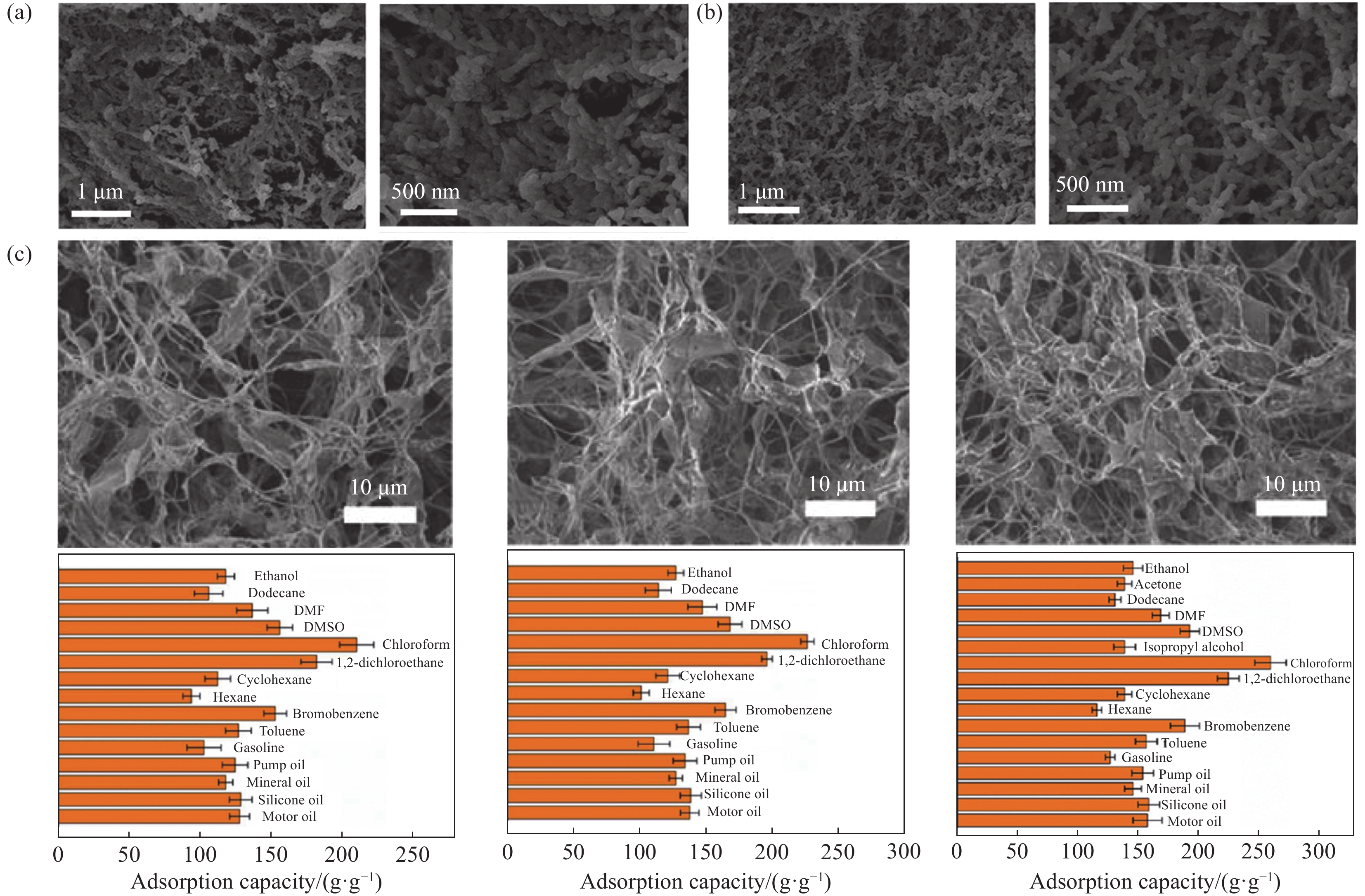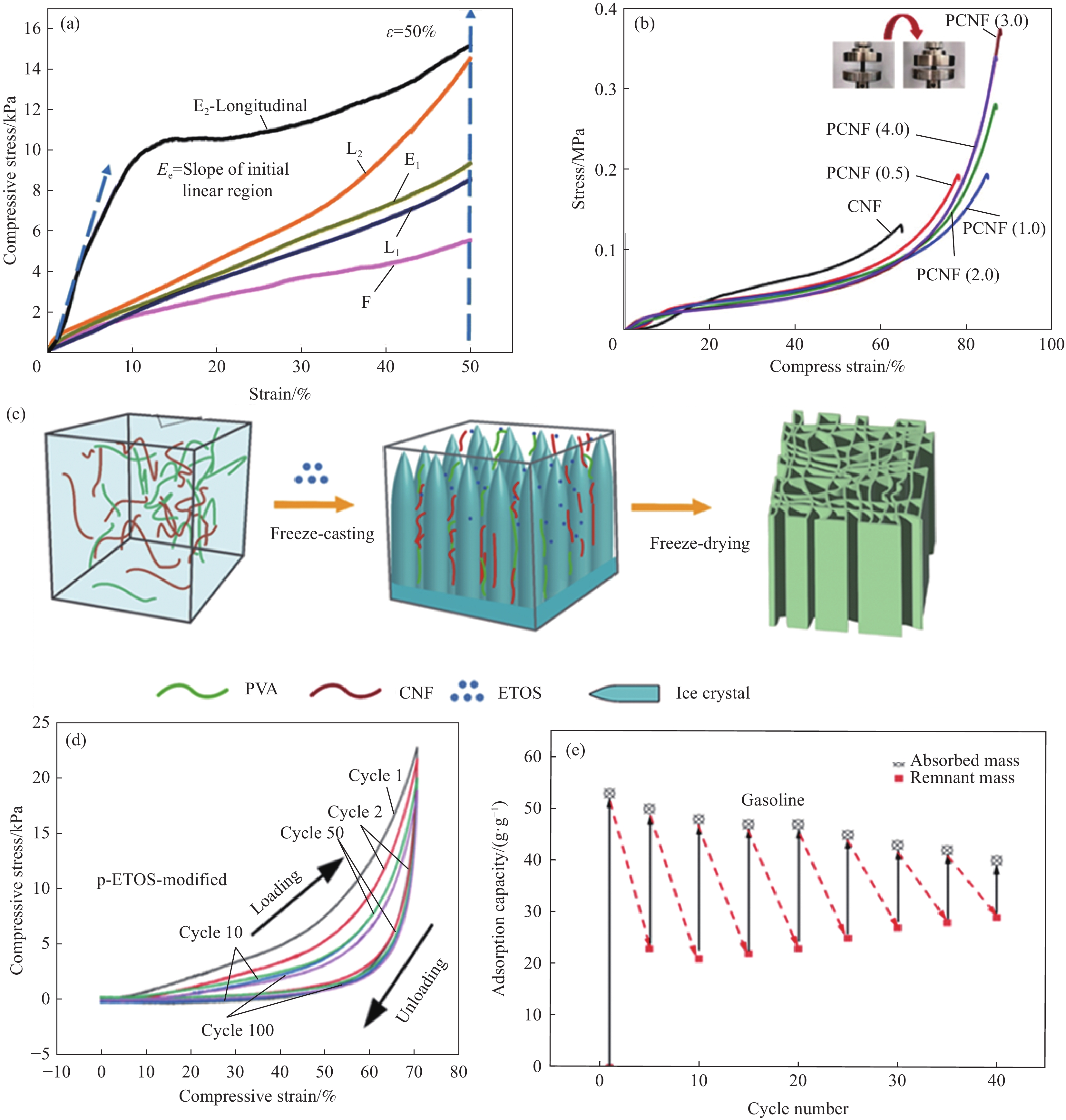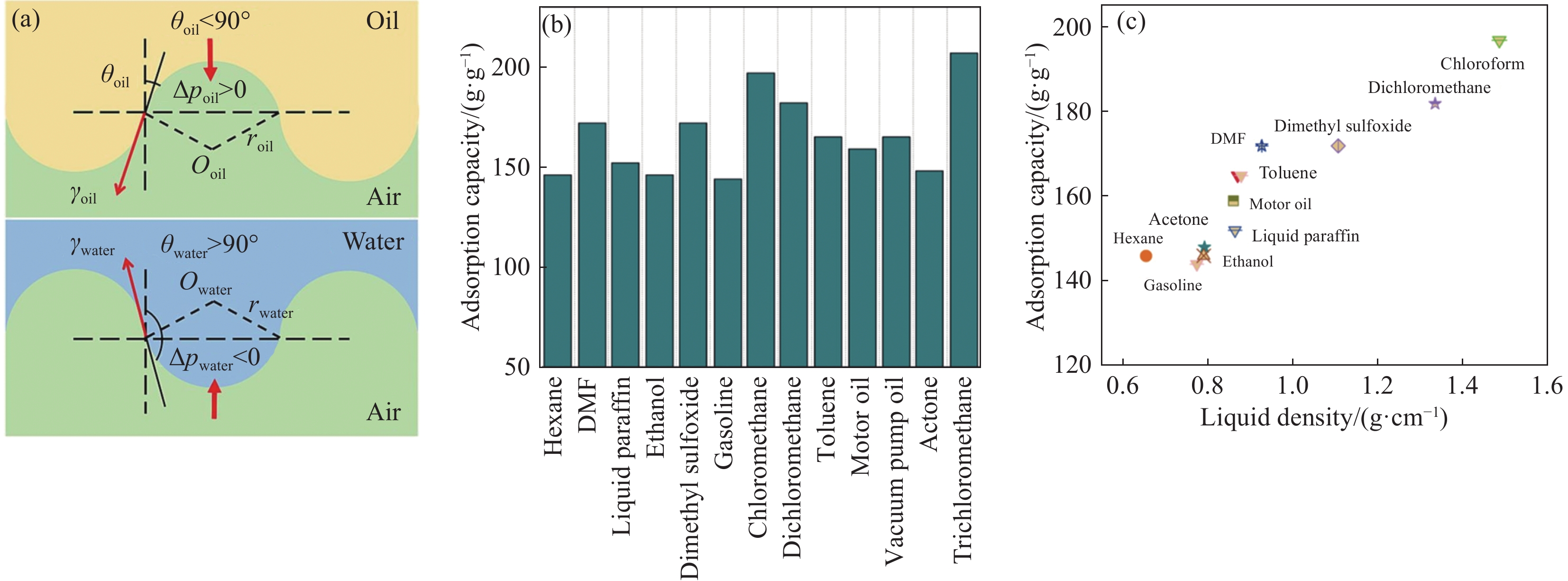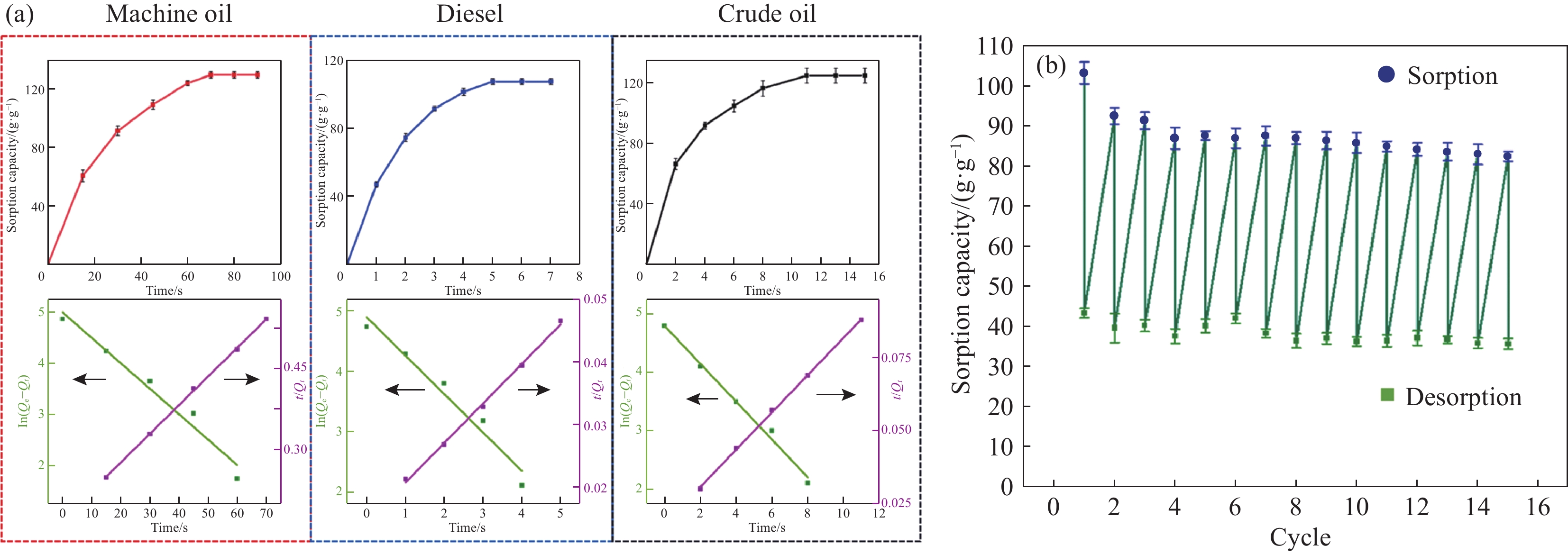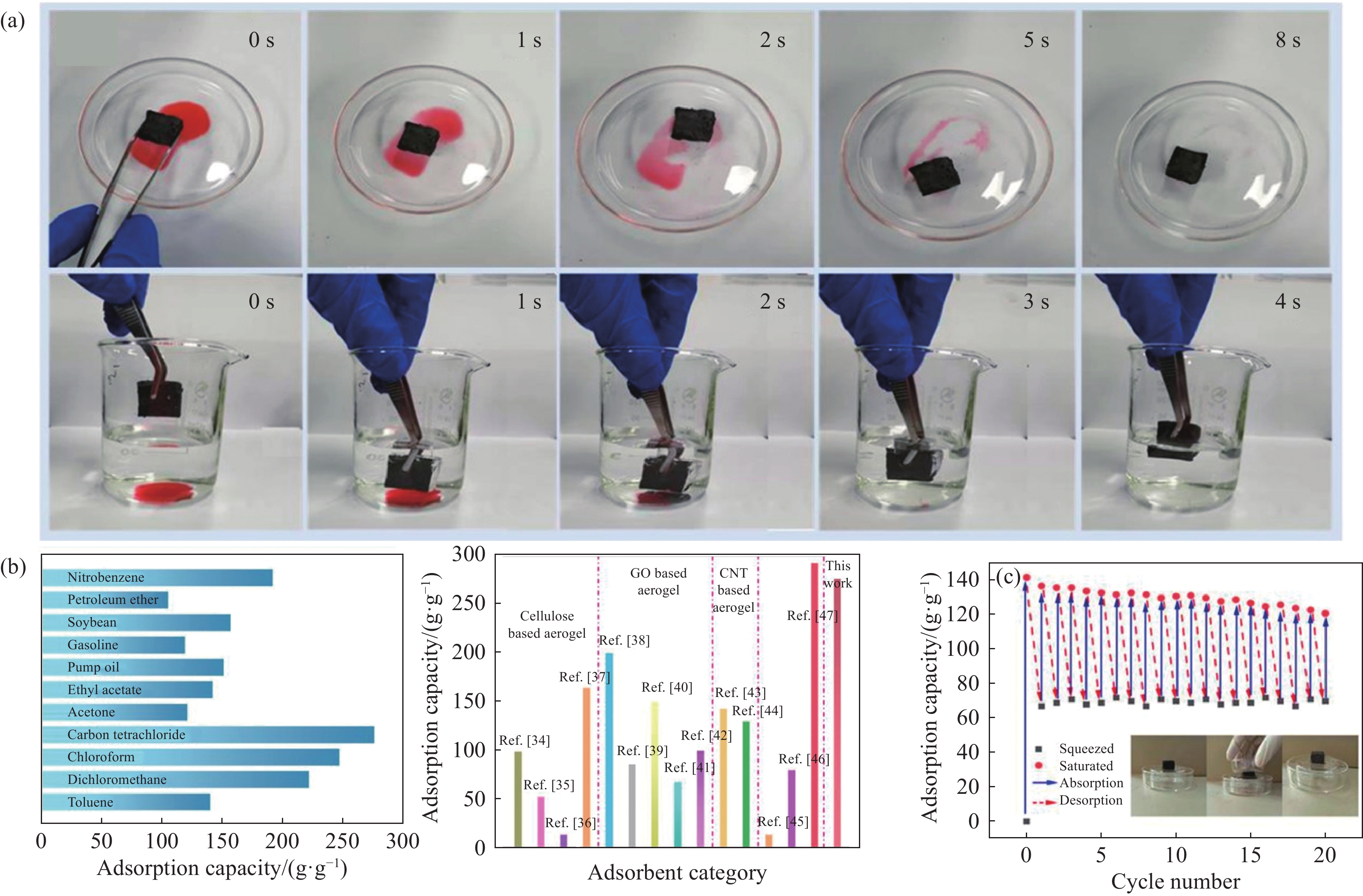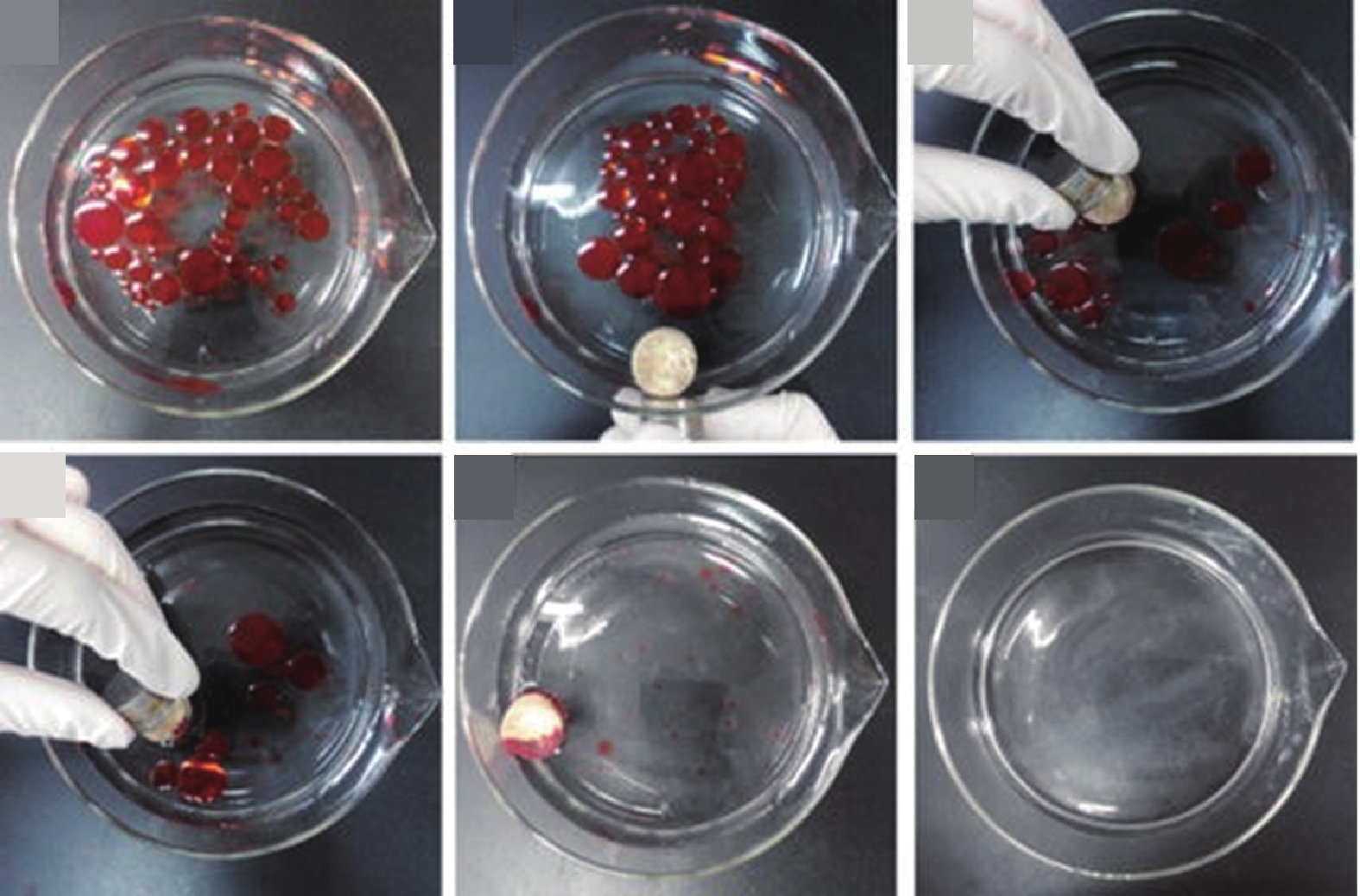Review on recent advances in nanocellulose aerogels for oil-water separation
-
摘要:
石油泄漏事件频繁发生,对环境和人类健康造成了极大的危害,因此亟需对含油废水进行有效的处理。目前的吸油材料存在局限性,如吸附量小、成本高和对环境有害等,而纳米纤维素气凝胶由于具有高孔隙度、高比表面积和低密度等特点,经疏水改性后能够吸附大量的油,在油水分离中有着显著优势。本文综述了纳米纤维素气凝胶的制备和疏水改性方法;介绍了纳米纤维素气凝胶结构特点及对其吸附性能的影响,综述了近年来纳米纤维素气凝胶在油和有机溶剂的吸附及油水混合物分离中的应用;最后提出了纳米纤维素气凝胶的发展现状及对未来的展望。
Abstract:The frequent occurrence of oil spills has caused great threat to environment and human health, so it is urgent to treat oily wastewater effectively. Current oil absorbing materials have limitations, such as low absorption capacity, high cost and environmental harm. Nanocellulose aerogel can absorb a large amount of oil because of its high porosity, high specific surface area and low density. After hydrophobic modification, nanocellulose aerogel has a significant advantage in oil-water separation. The preparation and hydrophobic modification of nanocellulose aerogel are reviewed in this paper. The structural characteristics of nanocellulose aerogel and their influence on absorption performance were introduced. The application of nanocellulose aerogel in adsorption of oil and organic solvent and separation of oil-water mixture in recent years were reviewed. Finally, the development status and future prospects of nanocellulose aerogel are presented.
-
Keywords:
- aerogels /
- nanocellulose /
- absorption /
- hydrophobicity /
- oil absorption /
- oil-water separation
-
柔性压力传感器因其轻便性、柔韧性和生物兼容性等特点在航空航天、智能机器人、汽车、生物医学等领域应用广泛[1-4]。现有的柔性压力传感器按传感机制的不同可以分为压阻式、压电式、压容式和摩擦电式,其中压容式传感器因具有结构简单、稳定性强、响应迅速等优点而被广泛关注。灵敏度[5]作为压力传感单元性能中最为关键的指标之一,反映了传感器整体的力学、电学性能的优异程度。然而,制造具备出色灵敏度的柔性压力传感器也受到传感系统复杂性的严重制约,因此柔性压力传感器的灵敏度性能优化具有重要的研究价值。
触觉传感单元又称传感器触觉敏感单元,作为柔性压力传感器最为核心的组成部件,主要由聚合物纳米复合材料制备而成。聚合物纳米复合材料是以聚合物为基体连续相,以纳米级填充物为分散相的一种复合材料,其多样的基体、填料组合形式及不同的制备方式,赋予了聚合物纳米复合材料与众不同的力学[6]、电学[7]等特性,目前也广泛应用于应力/应变传感器[8]、超级电容[9]、生物医学[10]等工程领域。石墨烯和碳纳米管[11]等碳基材料因其优异的导电性和柔顺性,常作为聚合物填料应用于柔性压力传感单元的制备中。药芳萍等[12]通过设计双层砂纸与石墨烯的微组合结构制备了一种电容式柔性压力传感器,在0~25 kPa的压力载荷下灵敏度最高可达到0.451 kPa−1。Xu等[13]将碳纳米管与MXene结合到多孔微结构的聚二甲基硅氧烷海绵上研制出一种高灵敏度、宽传感范围、快响应速度的应变传感器。吴其皓等[14]以碳纳米管(CNT)与聚二甲基硅氧烷(PDMS)作为填充材料,并引入不同结构的砂纸作为模板对其电极结构进行优化,制备的轻薄型柔性传感器的灵敏度在0~1 kPa下可达到0.602 kPa−1。Ma等[15]将聚氨酯泡沫(PU)制备成“树枝状”骨架并用CNT和BaTiO3进行覆盖,在0~100 kPa的宽测量范围内灵敏度最高可达到2.51 kPa−1。Ke等[16]在热塑性聚氨酯(TPU)基体中以CNT和石墨烯片(MLG)为导电填料,并且通过优化填料比例使传感器在0~1.2 MPa压力下灵敏度最高可以达到2.05 MPa−1。Bi等[17]通过调节镍粉颗粒、碳纳米管、石墨粉混合比例的方式,优化了柔性压力传感器的灵敏度与蠕变性能,使其平均灵敏度在0~16 kPa的压力下达到
0.0589 kPa−1。王苏等[18]则采用商用聚氨酯海绵(PU)为基底,通过多次浸渍涂覆的方法将MXene/多壁碳纳米管(MWCNT)复合材料负载在海绵基底上,制备出一种柔性压力传感器,其在0~50 kPa的宽压力范围内灵敏度达到0.16 kPa−1。根据上述研究可知,设计具有不同微观结构的复合材料和掺杂具有高介电性能的填料颗粒是提高传感器灵敏度的重要手段,如引文[12-15]所述,但其材料结构设计过程复杂,耗时较长,且部分高介电颗粒的成本昂贵,故想要批量化生产此类传感单元十分困难。而基于共混方式制备传感单元的方法操作简单,耗时较少,且适合大批量生产,如引文[16-18]所述,但对于灵敏度性能的提升较微结构设计相对较低。针对以上问题,本文旨在采用操作简易的机械共混方法,以成本较低的碳纳米管(CNT)和石墨烯(MLG)作为导电填料,结合下述的人工智能优化算法,实现无微结构的柔性电容式传感单元的制备与性能优化。在确定所需的填料类型之后,由于填充颗粒之间的协同效应和反应机制的复杂性,这些填料的添加比例仍然难以确定,且在多种因素的交互影响下,不依靠数学模型对制造条件进行估计也是一件耗时漫长、成本高昂的工作。在材料合成和工艺优化领域,传统实验合成方法的分析和优化一直是重要的研究课题。最常用的统计分析模型响应面法(RSM)[19],由Box和Wilson在1951年开发而来,其主要特点是通过少量试验创建预测模型来验证单个因素或多个因素的相互作用,用于评估和预测多参数实验条件,目前广泛应用于食品和化学领域[20]。但对于复杂的非线性问题,RSM二次多项式有时也无法达到所需的预测精度。支持向量机(SVR)作为机器学习中非线性回归模型,对非线性和非连通数据具有良好的预测能力。通过变换目标函数、改善方程的条件、降低计算的复杂度等操作[21],可以提高其运算速度,提升预测精度与泛化能力,能在一定程度上克服RSM的缺点。虽然RSM和SVR模型已被用于各类工程领域的过程预测,但鲜有基于此类研究方法对传感器性能进行预测。蜣螂优化算法(DBO)[22]是一种新型群体智能优化算法,相较于传统的遗传算法[23] 和粒子群算法[24],该算法的求解精度更高、收敛速度更快、全局搜索能力更强。目前该算法在三维路径规划[25]、电力信号预测[26]等问题上已有了初步应用。
综上所述,本文研究了电容式柔性压力传感单元导电机制,建立了相应的解析模型,确定了影响灵敏度性能的主要因素。采用实验设计法(DOE)中的中心组合设计法(CCD)[27]研究了CNT含量、MLG含量、搅拌时间和成型温度4个因素对灵敏度的影响。分别采用RSM和SVR机器学习算法对实验输入条件和输出性能建立预测模型,最后采用改进的DBO算法(IDBO)对该目标模型进行全局迭代寻优,确定传感器的最佳制备条件,最终实现无微结构的柔性电容式传感单元的性能优化。
1. 实验材料及方法
1.1 原材料及流程
本文所需原料包括硅橡胶基体(深圳红叶杰科技有限公司,双组分室温硫化硅橡胶RTV-2)、填充颗粒为多层石墨烯(MLG,苏州碳丰层数5~10层,厚度3.4~8 nm)、碳纳米管(CNT,苏州碳峰,纯度大于95wt%,长度大于3 μm,外径为8~15 nm),二甲基硅油、偶联剂(KH550)与硅橡胶配套固化剂,皆购于深圳红叶杰科技有限公司。图1为压力传感器的制备流程。
首先,在室温下(25~30℃),将一定比例的CNT和MLG加入研磨器研磨搅拌5~10 min,再加入到体积比为3∶1的乙醇水溶液中,超声分散15 min,把预处理后的填料颗粒在高温100℃左右进行干燥处理1 h。随后加入一定比例的偶联剂(KH550)进行表面改性处理,以增强分布宽度,减弱团聚效应[28]。并置于100℃高温干燥箱(DZF-6050B,上海合恒仪器设备有限公司)中进行烘干(1~3 h),干燥后利用研钵器轻研,即得到改性后的导电填料颗粒。随后将导电填料与45 g RTV基体进行混合,同时加入质量比为5%~8%二甲基硅油进行稀释,并使用搅拌器在
1800 r/min的转速下搅拌一定的时间。搅拌完成后按混合比例1.5wt%加入硅胶固化剂(深圳红叶科技,主要成分为聚硅氧烷)再次搅拌1~2 min,并将搅拌混合后的聚合材料注入模具并放置于RS-1型真空箱(河南沃林仪器设备有限公司)中进行排气处理15 min,然后将模具放入设定的高温干燥箱中加热3 h,最后取出放置于室温下待自然冷却成形。图2为厚度4 mm、直径20 mm的圆形片状体,图3为触觉敏感单元在透射电镜(FEI Tecnai F20,日本电子) 100 nm放大倍数下改性前后的微观结构,从图3(a)可以明显看出,改性前CNT/MLG团聚现象较明显,且分布相对随机。而在改性后,如图3(b)所示,团聚明显减少,导电颗粒联系紧密且在基体中的分布相对更加均匀,保证了其稳定的传感性能。1.2 试验方法
1.2.1 灵敏度测量及模型推理
灵敏度是衡量电容式传感器性能的重要指标,它代表了压力传感器电容量与载荷的相对变化关系[29],式(1)为灵敏度的函数表达式。如图4所示,测量过程中使用微机控制电子万能试验机(FBS200N,弗布斯检测设备有限公司)与LCR数字电桥(UC2836B,优策电子科技有限公司)构成压力传感器电容测试回路,将样品放置在试验机中,使用试验机对样品施加0~30 kPa的单轴压力使样品产生塑性变形,同时通过LCR数字电桥和采集软件监测电容变化数据。最后得到不同压力情况下的压力传感器电容变化:
S=δ(ΔC/C0)δP=(εA/d−εA/d0)/(εA/d0)EΔd/d0 (1) 式中:S表示灵敏度(kPa−1);C0为不施加压力时的初始电容值(pF);ΔC=C−C0表示电容变化量,其中C为单轴压力条件下的电容值;P表示施加的压力(kPa);E为弹性模量;d0是复合材料的初始厚度,Δd=d−d0是压缩过程中的材料厚度变化;复合压敏材料介电常数为ε;电极正对面积为A。
根据渗流理论[30-31],在以CNT、MLG为填料的渗滤复合材料中,介电常数不再是固定的常数。渗滤复合材料作为介电层的柔性电容式压力传感器的工作原理如图5所示,在压缩过程中,填料浓度局部增加。介电常数随着浓度的增加而增加,当浓度接近渗流阈值时,介电常数增加速率变得更快,最终形成导电通路。
![]() 图 5 渗滤复合材料作为介电层的柔性电容式压力传感器的工作原理图d—Initial thickness; ε—Initial dielectric constant; P—Applied pressure; d–Δd—Material thickness after compression; ε+Δε—Dielectric constant of the composite pressure-sensitive material after compressionFigure 5. Working principle diagram of flexible capacitive pressure sensor with percolation composite as dielectric layer
图 5 渗滤复合材料作为介电层的柔性电容式压力传感器的工作原理图d—Initial thickness; ε—Initial dielectric constant; P—Applied pressure; d–Δd—Material thickness after compression; ε+Δε—Dielectric constant of the composite pressure-sensitive material after compressionFigure 5. Working principle diagram of flexible capacitive pressure sensor with percolation composite as dielectric layer基于如下幂律方程所示:
ε=εd(fC−f)−t/(f<fC) (2) 其中:f和fC分别是导电填料的浓度和渗流阈值;ε和εd分别为复合材料和基体的介电常数;t表示比例常数。
故传感器的电容变化率可表示为下式,其中压敏单元厚度压缩比λ=d/d0:
ΔCC0=(εA/d−εA/d0)εA/d0=ελε0−1=[(fC−f0)/(fC−f)]tλ−1 (3) 综合上述表达式得到最终的传感器灵敏度解析模型如下:
S=[(fC−f0)/(fC−f)]t/λ−1E(λ−1) (4) 式中,f0表示初始状态的导电填料浓度。
由式(4)可知,电容式压力触觉敏感单元的灵敏度与聚合物纳米复合材料的介电性能和弹性模量密切相关。而合适的填料含量及填料在基体中的分布是否均匀是保证传感器优异介电性能的重要因素,同时根据Yang等[32]的研究可知,弹性模量E的屈服强度与温度密切相关。故本文将以填料含量、搅拌时间、成型温度作为主要影响因素,对触觉单元的灵敏度性能进行优化。
1.2.2 单因素实验设计
单因素实验设计是分别研究不同填料配比、搅拌时间、成型温度对传感器灵敏度性能的影响,为后续多因素实验设计提供一个合理的数值范围,如表1所示。试验时,首先固定MLG的含量为0.6 g,搅拌时间15 min,成型温度为 80℃,改变CNT的含量,分别是0.4、0.5、0.6、0.7、0.8、0.9、1.0、1.1 g;同理,固定 CNT的含量为0.7 g,保持搅拌时间与成型温度不变,改变MLG的含量,分别是0.4、0.5、0.6、0.7、0.8、0.9、1.0、1.1 g;而后保持CNT、MLG的含量与成型温度不变,分别为0.7 g、0.6 g、80℃,改变压力传感器制备过程中的搅拌时间分别为10、15、20、25、30 min;最后在保持填料含量与搅拌时间不变的情况下改变固化温度分别为40、60、80、100、120℃。实验重复 3 次,每个指标在相同条件下测定 3 次,最终得到同一条件下制备的传感器的平均灵敏度。
表 1 单因素实验方案Table 1. Single-factor protocolIndex Content of CNT/g Content of MLG/g Mixing time/min Molding temperature/℃ 1 0.4, 0.5, 0.6, 0.7, 0.8, 0.9,
1.0, 1.10.6 15 80 2 0.7 0.4, 0.5, 0.6, 0.7, 0.8, 0.9,
1.0, 1.115 80 3 0.7 0.6 10, 15, 20, 25, 30 80 4 0.7 0.6 15 40, 60, 80, 100, 120 1.3 预测与优化方法
1.3.1 响应面法(RSM)
响应面法(RSM)是一种用以评估一个或多个输出和输入参数之间关系建模方法,其计算量低,采用随机无偏设计,可以减少许多不必要的实验消耗,节约实验的时间与经济成本[33]。RSM中输入参数与输出变量之间的函数关系如下:
y=α0+N∑i=1αixi+N∑i=1αiix2i+∑i<j∑αijxixj (5) 其中:y是响应变量;xi是输入参数;α0表示偏差;αi表示线性效应;αii表示因素的平方效应;αij表示影响因素之间的交互效应。
RSM的实验设计法(DEO)主要分为两类:中心复合设计法(CCD)和Box-Behnken设计法(BBD)。为尽可能多的获取最佳实验条件,本文采用CCD法,进行多因素实验设计,其中每个输入参数有5个编码水平,分别为−2、−1、0、+1、+2。
图6(a)~6(d)分别为在得到每个单因素的实验结果后,根据其实验结果,以影响效果最大的点为中心点,确定了每个影响因素的实验范围,然后在实验范围内应用RSM确定多因素的实验方案,每个输入的具体水平因子显示在表2中,具体的CCD多因素实验方案如表3所示。
表 2 4个因素的水平和编码Table 2. Level and code of four factorsCode Levels factor CNT/g MLG/g Mixing
time/minMolding
temperature/℃−2 0.7 0.6 10 40 −1 0.8 0.7 15 60 0 0.9 0.8 20 80 1 1.0 0.9 25 100 2 1.1 1.0 30 120 表 3 多因素中心组合实验设计(CCD)与结果Table 3. Multifactorial central combinatorial experimental design (CCD) and resultsRun Factor Sensitivity/
(kPa−1)CNT MLG Mixing
timeMolding
temperature1 1 −1 −1 1 0.227 2 0 0 2 0 0.130 3* 0 0 0 0 0.118 4 −1 −1 −1 1 0.058 5 1 1 1 1 0.191 6 1 −1 −1 −1 0.208 7 −1 1 1 1 0.025 8* 0 0 0 0 0.145 9 −1 1 −1 1 0.050 10 −1 −1 1 −1 0.125 11 −2 0 0 0 0.050 12 0 −2 0 0 0.185 13 0 0 −2 0 0.193 14 −1 1 1 −1 0.164 15 1 1 −1 −1 0.375 16 1 −1 1 −1 0.180 17* 0 0 0 0 0.135 18 1 1 1 −1 0.310 19 0 1 0 0 0.198 20 2 0 0 0 0.478 21 −1 1 −1 −1 0.178 22 0 0 0 0 0.154 23 1 1 −1 1 0.326 24 0 0 0 −2 0.124 25* 0 0 0 0 0.117 26* 0 0 0 0 0.112 27 −1 −1 −1 −1 0.078 28 1 −1 1 1 0.248 29 −1 −1 1 1 0.090 30 0 0 0 2 0.073 Note: * indicates the central repeated trials. 1.3.2 支持向量回归(SVR)
支持向量机(SVM)是一种机器学习方法,如图7所示,它通过在高维空间中构建一个或一组超平面来实现分类或回归,其中用于回归的方法称为支持向量回归(SVR)。在SVR模型中核函数用以解决线性不可分的问题,其基本的数学表达式如下:
![]() 图 7 支持向量机回归(SVR)模型示意图Figure 7. Support vector machine regression (SVR) model diagramxn represents the independent variable; wij represents the weight coefficient; (βi, βi*) represents the Lagrange multiplier used for dual space transformation; K(x, xi) represents the kernel function used to solve the quadratic equation; b represents the deviation; y represents the dependent variable
图 7 支持向量机回归(SVR)模型示意图Figure 7. Support vector machine regression (SVR) model diagramxn represents the independent variable; wij represents the weight coefficient; (βi, βi*) represents the Lagrange multiplier used for dual space transformation; K(x, xi) represents the kernel function used to solve the quadratic equation; b represents the deviation; y represents the dependent variabley=n∑i=1(βi−β∗i)K(x,xi)+b (6) 其中:(βi, β∗i)表示用于对偶空间变换的拉格朗日乘数;K(x,xi)表示用于求解二次方程的核函数;b表示偏差。
由于核函数是影响SVR模型精度的重要因素之一,因此为SVR模型选择合适的核函数尤为重要。目前,支持向量回归模型的核函数主要分为4种类型,即线性、多项式、径向基函数(RBF)和sigmoid。此外,核函数选取后,算法的超参数如g、C和ε也会影响SVR模型的性能,因此超参数的选取也是SVR建模的关键步骤。在本文中,RBF被用作模型计算的核函数,超参数优化则采用K折交叉验证的网格搜索方法(图8)。
1.3.3 蜣螂优化算法及其改进(IDBO)
蜣螂优化算法(DBO)作为一种新型启发式群智能优化算法,通过模拟蜣螂的滚球、跳舞、觅食、偷窃和繁殖等行为实现种群全局范围内最优值的选择。其适应度值作为衡量优化结果优劣的标准,优化的具体流程如图9所示。
同其他群智能优化算法类似,DBO通过随机生成位置的方式实现种群的初始化,但这容易出现种群分布不均匀,导致种群多样性减少,种群质量不高,从而影响算法的收敛速度及搜索性能。为了能够让个体在算法开始时有较高的全局搜索能力,需要让种群的位置均匀分布在整个问题的解空间内,混沌作为一种非线性的自然现象,因其混沌序列具有遍历性、随机性等优点,被广泛用于优化搜索问题。利用混沌变量搜索显然比无序随机搜索具有更大的优越性,因此本文采用改进的Tent混沌映射[34]替换原算法的初始化。原算法初始化与改进的Tent混沌初始化表达式如下:
xi,j=lbj+ri,j(ubj−lbj) (7) 式中:ri,j表示随机数列;lbj、ubj分别表示算法种群维度的上下界。
{2xi+rand(0,1)1N, 0⩽ (8) 式中, N 是序列内粒子的个数。引入随机变量 \mathrm{r}\mathrm{a}\mathrm{n}\mathrm{d}\left(0,1\right)/N 不仅仍然保持了Tent混沌映射的随机性、遍历性、规律性,而且能够有效避免迭代落入小周期点和不稳定周期点内。
在对种群初始化进行优化后,为了提升算法在迭代的不同时期全局/局部搜索能力。本文参考了文献[35]采用自适应 t 分布扰动策略,使DBO算法获得更优异的搜索性能。改进后的全局搜索位置更新公式为
\left\{\begin{array}{l}\mathrm{if\ rand} < p \\ x_i^t=x_i+x_it\left(i_{\mathrm{t}\mathrm{e}\mathrm{r}}\right)\end{array}\right. (9) 式中: p=0.5-0.1\left(T-t\right)/T 表示扰动概率; {x}_{{{i}}}^{t} 为突变后的蜣螂位置; {x}_{{{i}}} 为第 i 只蜣螂个体位置; t\left({i}_{\mathrm{t}\mathrm{e}\mathrm{r}}\right) 是以迭代次数 {i}_{\mathrm{t}\mathrm{e}\mathrm{r}} 为自由度的 t 分布函数;T为算法设定的迭代次数。
通过自适应 t 分布突变扰动策略虽然能增强算法全局搜索和跳出局部最优的能力,但是无法确定扰动之后得到的新位置一定比原位置的适应度值要好,因此在进行变异扰动更新后,加入贪婪策略[36],通过比较新旧两个位置的适应度值,确定是否要更新位置。贪婪策略表达式如下:
{x}_{{{i}}}^{\mathrm{n}\mathrm{e}\mathrm{w}}\left(t\right)=\left\{\begin{array}{l}{x}_{{{i}}}^{}\left(t\right),\left(f\right({x}_{{{i}}}^{}\left(t\right)) < f({x}_{{\mathrm{g}}}\left(t\right)))\\ {x}_{{\mathrm{g}}}\left(t\right),\left(f\right({x}_{{{i}}}^{}\left(t\right)) > f({x}_{{\mathrm{g}}}\left(t\right)))\end{array}\right. (10) 其中: {x}_{{{i}}}^{\mathrm{n}\mathrm{e}\mathrm{w}}\left(t\right) 为经过贪婪规则更新后的个体位置; {x}_{{{i}}}\left(t\right) 为扰动后的个体; {x}_{{\mathrm{g}}}\left(t\right) 为扰动前的个体; f 代表蜣螂适应度函数。
IDBO算法的具体流程如图10所示。
为了验证所提蜣螂优化算法改进策略的有效性,本文将改进的IDBO与4种被广泛研究的优化算法(粒子群算法(PSO)、遗传算法(GA)、灰狼优化算法(GWO)、DBO)进行了比较。选取多种标准测试函数[37]评价其性能表现。其中,F1~F3为高维单峰测试函数,F4~F6为高维多峰测试函数。为保证实验公平性,所有算法的迭代次数与种群数都设置为100,结果如图11所示。
由图11可以看出,改进后的蜣螂算法在搜索精度及收敛速度上皆优于其他算法,其性能得到了显著提高。
1.3.4 预测模型精度的评价指标
在本文中,由于RSM、SVR对于传感单元灵敏度的性能预测本质上是一种回归问题,因此采用决定系数(R2)、均方根误差(Rmse)和平均绝对误差(Mae)用于评估二者所建立的预测模型的准确性,具体表达式如下:
{R}^{2}=1-\frac{\displaystyle\sum _{i=1}^{n}{\left({Y}_{{{i}}}-{{Y}_{\mathrm{p}\mathrm{r}\mathrm{e}\mathrm{d}}}_{{{i}}}\right)}^{2}}{\displaystyle\sum _{i=1}^{n}{\left({Y}_{{{i}}}-\overline{Y}\right)}^{2}} (11) {R}_{\mathrm{m}\mathrm{s}\mathrm{e}}=\sqrt{\frac{1}{N}\sum _{i=1}^{N}{\left({Y}_{{{i}}}-{{Y}_{\mathrm{p}\mathrm{r}\mathrm{e}\mathrm{d}}}_{{{i}}}\right)}^{2}} (12) {M}_{\mathrm{a}\mathrm{e}}=\frac{1}{N}\sum _{i=1}^{N}\left|{Y}_{{{i}}}-{{Y}_{\mathrm{p}\mathrm{r}\mathrm{e}\mathrm{d}}}_{{{i}}}\right| (13) 其中: {Y}_{{{i}}} 和 {{Y}_{\mathrm{p}\mathrm{r}\mathrm{e}\mathrm{d}}}_{{{i}}} 分别是通过实验测量的实际灵敏度和通过应用估算模型估算的灵敏度; \overline{Y} 是通过实验所测得灵敏度的平均值;N为本次实验测量的灵敏度样品的总个数。
2. 结果与讨论
2.1 响应面(RSM)模型的建立与分析
本实验采用Design-Expert软件对数据进行处理和分析,并通过方差分析(ANOVA)以检查RSM模型对数据的拟合情况,从而确定自变量对灵敏度的影响程度。表4为灵敏度方差分析结果。可以看出,该回归模型的F-value为32.91,P-value小于
0.0001 ,而失拟项的P-value为0.1422, 大于0.05,表明整体回归模型高度显著。RSM模型的R2为0.9685 ,证明了该模型的拟合程度较高。该回归模型的方差系数(CV)为14.86%,低于15%,CV值较低,表明其置信度较高,模型能很好地反映真实的实验数据。基于F-value的显著性排序为CNT>MLG>成型温度>搅拌时间。根据CCD的ANOVA回归系数,灵敏度与填料配比、搅拌时间、成型温度的响应关系可表示为表 4 灵敏度响应的方差分析Table 4. Analysis of variance for sensitivity responseSource Sum of squares df Mean square F-value P-value Status Model 0.2877 14 0.0205 32.91 < 0.0001 Significant {x}_{1} -CNT 0.1931 1 0.1931 309.36 < 0.0001 {x}_{2} -MLG 0.0117 1 0.0117 18.789 0.0006 {x}_{3} -Mixing time 0.0036 1 0.0036 5.73 0.0302 {x}_{4} -Temperature 0.0106 1 0.0106 17.02 0.0009 {x}_{1}{x}_{2} 0.0047 1 0.0047 7.46 0.0155 {x}_{1}{x}_{3} 0.0038 1 0.0038 6.11 0.0259 {x}_{1}{x}_{4} 0.0036 1 0.0036 5.81 0.0292 {x}_{2}{x}_{3} 0.0060 1 0.0060 9.68 0.0071 {x}_{2}{x}_{4} 0.0136 1 0.0136 21.83 0.0003 {x}_{3}{x}_{4} 0.0001 1 0.0001 0.2211 0.6449 {{x}_{1}}^{2} 0.0267 1 0.0267 42.79 < 0.0001 {{x}_{2}}^{2} 0.0085 1 0.0085 13.65 0.0022 {{x}_{3}}^{2} 0.0008 1 0.0008 1.26 0.2795 {{x}_{4}}^{2} 0.0030 1 0.0030 4.88 0.0432 Residual 0.0094 15 0.0006 Lack of fit 0.0079 10 0.0008 2.70 0.1422 Not significant Pure error 0.0015 5 0.0003 Cor total 0.2970 29 {R}^{2} 0.9685 {R}_{\mathrm{A}\mathrm{d}\mathrm{j}}^{2} 0.9390 {R}_{\mathrm{P}\mathrm{r}\mathrm{e}\mathrm{d}}^{2} 0.8311 CV/% 14.86 Adequate precision 23.8126 Notes: Cor total—Total number of correlation coefficients; {R}_{\mathrm{A}\mathrm{d}\mathrm{j}}^{2} —Adjusted coefficient of determination; {R}_{\mathrm{P}\mathrm{r}\mathrm{e}\mathrm{d}}^{2} —Predicted coefficient of determination; Adequate precision is an important statistical metric for evaluating the predictive ability of response surface models; CV—Coefficient of variance; df—Number of independent variables. \begin{split} Y=&0.1324+0.0897{x}_{1}+0.0250{x}_{2}-0.0122{x}_{3}-\\ &0.0210{x}_{4}+0.0171{x}_{1}{x}_{2}-0.0154{x}_{1}{x}_{3}+0.0151{x}_{1}{x}_{4}- \\ &0.0194{x}_{2}{x}_{3}-0.0292{x}_{2}{x}_{4}-0.0029{x}_{3}{x}_{4}+0.0309{{x}_{1}}^{2}+\\ &0.0228{{x}_{2}}^{2}+0.0053{{x}_{3}}^{2}-0.0104{{x}_{4}}^{2}\\[-1pt]\end{split} (14) 式中: Y 表示响应值,代表预测灵敏度; {x}_{1} 、 {x}_{2} 分别表示CNT和MLG的含量; {x}_{3} 代表搅拌时间; {x}_{4} 表示成型温度。
图12展示了各因素之间交互作用对灵敏度的影响,当研究两个因素之间交互时,其余两个因素处于中心水平状态。
![]() 图 12 灵敏度三维响应面图:(a) CNT/MLG相互作用;(b) CNT/搅拌时间相互作用;(c) CNT/成型温度相互作用;(d) MLG/搅拌时间相互作用;(e) MLG/成型温度相互作用;(f)搅拌/成型温度相互作用Figure 12. Three-dimensional response surface plots of sensitivity: (a) Interaction between CNT/MLG content; (b) Interaction between CNT/mixing time; (c) Interaction between CNT/molding temperature; (d) Interaction between MLG/mixing time; (e) Interaction between MLG/molding temperature; (f) Interaction between mixing time/molding temperature
图 12 灵敏度三维响应面图:(a) CNT/MLG相互作用;(b) CNT/搅拌时间相互作用;(c) CNT/成型温度相互作用;(d) MLG/搅拌时间相互作用;(e) MLG/成型温度相互作用;(f)搅拌/成型温度相互作用Figure 12. Three-dimensional response surface plots of sensitivity: (a) Interaction between CNT/MLG content; (b) Interaction between CNT/mixing time; (c) Interaction between CNT/molding temperature; (d) Interaction between MLG/mixing time; (e) Interaction between MLG/molding temperature; (f) Interaction between mixing time/molding temperature由图12(a)可以看出,随着CNT和MLG含量的提升,灵敏度的提升十分显著,这是由于这类碳基材料具有优异的导电性和柔顺性,两者结合能够实现基于二维石墨烯蜂窝结构与一维碳纳米管的三维导电网络,从而进一步增强其分散性[38],增加填料与基体间的接触面积[39],从而提升传感器的介电性能,这也与式(4)的推论相互印证。根据图12(b)、图12(d)可知,在CNT或MLG含量一定时,传感器的灵敏度性能随着搅拌时间的增加改变并不明显,而随着搅拌时间的继续增加,灵敏度有下降的趋势。这是由于长时间的混合剪切破坏了填料内部的三维导电网络结构[40],这也表明适合的搅拌时间对压力传感器灵敏度的重要性。从图12(c)、图12(e)可知,在固化过程中随着温度的升高灵敏度逐渐下降。这是由于在高温固化的过程中基体持续软化使CNT和MLG之间的平均间距减小,这样便容易发生导电颗粒的团聚现象,从而对压力传感器的力学性能、电学性能产生了负面影响[41]。而从图12(f)可以了解到,在没有导电填料的情况下,仅对硅橡胶(RTV)基体进行搅拌和高温固化并不会对传感器的性能造成实质性的影响。
2.2 支持向量机回归(SVR)模型的建立与优化
基于上述CCD的数据样本,以CNT含量、MLG含量、搅拌时间和成型温度为输入参数,灵敏度为预测的输出变量建立预测模型。如图13所示,利用网格搜索法优化SVR的超参数,当C为
68.5935 ,g为0.7071 时,在5折交叉验证下的均方误差(MSE)达到最小值,平均R2值最大,即模型基于数据样本的预测性能达到最优。其中,基于SVR灵敏度预测模型的R2、Rmse和Mae值如表5所示。表 5 SVR模型的5折交叉验证预测性能评价指标Table 5. Performance evaluation index of SVR model by 5-fold cross-validationIndex {R}^{2} Rmse Mae 1 0.9893 0.0253 0.0193 2 0.9841 0.0328 0.0301 3 0.9735 0.0354 0.0231 4 0.9769 0.0389 0.0321 5 0.9882 0.0188 0.0151 Average 0.9824 0.0320 0.0239 Notes: Rmse—Root mean square error; Mae—Mean error rate. 从表5可以看出,在灵敏度预测性能评估中,平均R2、平均Rmse和平均Mae分别为
0.9824 、0.0320 和0.0239 ,这表明了预测值和实验值之间的高度相关性。此外,R2、Rmse和Mae的范围是0.9735 ~0.9893 、0.0188 ~0.0389 和0.0151 ~0.0321 ,这表明模型预测的波动范围极小,证明了此预测模型的高鲁棒性、高置信度。2.3 RSM与SVR预测模型对比
如表6所示,为比较两种模型的预测性能,基于式(10) RSM回归模型对相同数据进行了5折交叉验证。
表 6 响应面法(RSM)模型的5折交叉验证预测性能评价指标Table 6. Performance evaluation index of response surface methodology (RSM) model by 5-fold cross-validationIndex R2 Rmse Mae 1 0.9563 0.04002 0.03623 2 0.9642 0.02701 0.02443 3 0.9778 0.03103 0.02671 4 0.9669 0.04731 0.03113 5 0.9782 0.03312 0.02608 Average 0.96868 0.035698 0.028916 根据表5、表6的平均比较结果表明,SVR模型基于灵敏度性能的预测平均R2大于RSM模型,表明其适用性更好。SVR模型基于灵敏度预测的平均Rmse和Mae均小于RSM模型,更加表明超参优化后的SVR模型的预测精度优于RSM模型。
图14为SVR和RSM模型的5折交叉验证的雷达图。雷达图中可更加清楚地了解5折交叉验证下两预测模型的性能表现,图14(a)中SVR模型灵敏度的R2面积大于RSM模型,图14(b)、图14(c)中Rmse和Mae的面积均小于RSM模型,充分说明SVR模型在灵敏度的预测上具有更好的准确性。因此,通过此次比较分析表明,RSM和SVR模型在灵敏度性能预测方面都表现出良好的适应性和鲁棒性,而相较于RSM模型,SVR模型具有更好的预测效果。
2.4 基于改进蜣螂算法(IDBO)的模型优化
此优化过程是为了获得与灵敏度相适应的最佳材料配比及制作成型的工艺参数。通过上述的研究分析可知,由于通过超参优化后的SVR模型预测性能相优于RSM模型,故选择SVR模型用作优化的目标函数模型。通过IDBO算法不断迭代寻找最优的工艺参数,其中种群数量设为50,变量维度为4,迭代次数100次,迭代过程中的群体最优适应度值如图15所示。可知,随着迭代次数的增加,种群最优的适应度值也在不断上升,直至找到SVR模型的最优解,经过10次迭代后达到最佳适应度,即灵敏度性能达到最优,随后基本保持不变。最优的材料配比及制作工艺为CNT占比2.3wt%、MLG占比1.9wt%、搅拌时间15 min、成型温度78℃,仿真灵敏度为
0.5512 kPa−1。2.5 实验验证与对比
为了验证上述实验分析的合理性,根据上述优化结果的数据进行传感单元样品的制作,图16为所制作传感单元的灵敏度性能图,拟合直线斜率表示压力传感器在0~30 kPa时灵敏度大小。可知,采用优化后数据所制备的传感单元灵敏度S相较未优化时有大幅提升,达到
0.5371 kPa−1,与仿真灵敏度的相对误差为2.625%,也证明了基于SVR-IDBO优化预测模型的可靠性。表7为本文所制备的柔性电容传感单元与近年来相关柔性压力传感器的灵敏度性能比较情况[12, 42-45]。结果表明,在相同压力载荷下,本文的传感器单元灵敏度性能处于较高的水平。其中,在同等压力下与张鹏等[45]的研究相比,灵敏度性能提升了5倍,与Yan等[44]相比提升了1.4倍,与药芳萍等[12]、赵珂[42]相比较,灵敏度性能分别提升了1.7倍与2.5倍。且与原始实验相比灵敏度最高提升了20倍。进一步表明结合SVR-IDBO方法进行触觉敏感单元性能优化的有效性与优越性。
表 7 传感单元灵敏度性能对比Table 7. Comparison of sensitivity performance of sensing unitsMethod Sensitivity/ \mathrm{kP}\mathrm{a}^{-1} Pressure range/ \mathrm{k}\mathrm{P}\mathrm{a} Comparison/ \mathrm{kP}\mathrm{a}^{-1} Ref. Microstructure design 0.451 0-25 0.7665 [12] Microstructure design 0.69 0-10 1.7531 [42] Microstructure design 1.01 0-25 0.7665 [43] Mechanical blending 0.3850 0-30 0.5371 [44] Microstructure design 0.341 0-5 1.9698 [45] Mechanical blending 0.5371 0-30 – This study 3. 相关性能测试
为满足传感器在实际场景的应用,本文的柔性触觉敏感单元除了在宽传感范围内具备较高的灵敏度之外,还具备其他较理想的特性,包括快速响应、高重复稳定性、良好的耐用性等。
如图17(a)所示,使用万能试验机对触觉敏感单元进行加载和卸载,在10 mm/min的较慢载荷进行速度下,其响应时间和恢复时间均能达到1 s,且每一循环峰值都极为接近,表明其在快速响应的同时也保证了电容信号的稳定传输。
如图17(b)、图17(c)所示,在15 kPa、30 kPa、45 kPa的载荷范围内进行10次循环测试,均能表现出良好的电容输出稳定性。且通过施加0~30 kPa的300次循环载荷也体现出触觉单元在受到载荷的中后期具有良好的重复稳定性。
4. 结 论
采用机器学习与智能优化算法相结合的方式改善了基于机械共混的柔性压力传感单元的制备条件。主要工作如下:
(1)通过推导压容式传感器灵敏度的机制,确定了影响其性能的主要因素有碳纳米管(CNT)含量、石墨烯(MLG)含量、搅拌时间和成型温度。采用中心复合实验设计法(CCD)动态检测了各种因素对输出性能的影响,结果表明,所有的因素均对输出性能有显著影响,并得到了响应面法(RSM)回归模型;
(2)基于CCD的实验数据作为输入,利用超参优化后的支持向量机(SVR)算法对灵敏度进行预测建模,并与RSM预测模型进行了比较,结果表明两种方法对灵敏度性能均表现出极高的预测精度,特别是超参优化后的SVR模型的预测结果与实际结果十分接近,这也表明所提出的方法在预测多因素影响和传感器性能之间的复杂关系方面具有巨大的应用潜力;
(3)利用改进的蜣螂优化算法(IDBO)对SVR模型进行迭代优化,逆向解析出了柔性传感器单元最佳的制备条件,实验结果表明,灵敏度性能大幅提升,且与仿真结果的相对误差较低。
综上所述,本文所采用的研究方法为传感单元性能优化提供了参考,同时为智能优化算法在柔性压力传感器方面的应用提供了理论依据,并且对实现柔性传感单元的大规模、工业化生产具有一定的指导意义。
-
图 2 干燥过程孔壁应力分析[36]
F1, F2, F3, F4—Capillary pressure, resulting from the evaporation of solvent at the gas-liquid interface will transmit to the pore walls; F1′, F2′, F3′, F4′—Resultant forces on the pore walls in the horizontal direction caused by capillary pressure
Figure 2. Stress analysis of pore wall during drying process[36]
图 3 (a) 化学气相沉积法(CVD)改性细菌纳米纤维素(BNC)气凝胶示意图[39];(b)改性前后细菌纳米纤维(BNC)气凝胶的疏水性及相应水接触角[39];(c)不同甲基三甲氧基硅烷(MTMS)添加量改性纤维素纳米纤维(CNF)气凝胶(TCNF-Si)的水接触角[40]
BC—Bacterial cellulose
Figure 3. (a) Illustration for the chemical vapor deposition (CVD) process of bacterial nanocellulose (BNC) aerogel[39]; (b) Hydrophobicity and corresponding water contact angle of bacterial nanocellulose (BNC) aerogel before and after modification[39]; (c) Water contact angle of cellulose nanofibers (CNF) aerogels (TCNF-Si) at different methyltrimethoxy-silane (MTMS) supplemental levels[40]
图 4 (a)不同交联方式和不同前驱体浓度下纳米纤维素气凝胶的比表面积[46];(b)不同纳米纤维素(NC)/Al2O3质量比气凝胶对噻吩的吸附能力[49]
S—Specific surface area
Figure 4. (a) Specific surface area of nanocellulose aerogel under different crosslinking methods and different precursor concentrations[46]; (b) Adsorption capacity of aerogel for thiophene at different mass ratios of nanocellulose (NC) to Al2O3[49]
图 5 (a)通过冷冻干燥制备气凝胶的SEM图像[50];(b)通过超临界CO2干燥制备气凝胶的SEM图像[50];(c)不同甲基三乙氧基硅烷(MTES)含量下气凝胶的孔隙结构及对应吸附能力[50]
DMF—Dimethylformamide; DMSO—Dimethyl sulfoxide
Figure 5. (a) SEM images of the aerogels obtained by freeze drying[50]; (b) SEM images of typical aerogels obtained by supercritical CO2 drying[50]; (c) Pore structure and adsorption capacity of aerogel with different methyl triethoxysilane (MTES) contents[50]
图 6 (a)不同干燥方法下气凝胶的应力-应变曲线[52];(b)不同聚多巴胺(PDA)含量下CNF气凝胶的应力-应变曲线[53];(c) CNF/聚乙烯醇(PVA)/四乙氧基硅烷(ETOS)定向冷冻干燥过程[54];(d) 100次压缩-卸载循环下气凝胶的应力-应变曲线[54];(e) 40次吸附-解吸循环下气凝胶的吸附能力[54]
F—Freezing in a refrigerator; L1—Non-directional freezing in liquid nitrogen; L2—Directional freezing in liquid nitrogen; E1—Non-directional freezing in ethanol; E2—Directional freezing in ethanol; ε—Compressive strain; Ee—Linear elastic region; CNF—Cellulose nanofibers; PCNF—polydopamine (PDA)/CNF composite aerogel, the number represents the PDA concentration
Figure 6. (a) Stress-strain curves of aerogel under different drying methods[52]; (b) Stress-strain curves of CNF aerogel with different polydopamine (PDA) contents[53]; (c) Directional freeze drying process of CNF/polyvinyl alcohol (PVA)/tetraethoxysilane aerogel (ETOS)[54]; (d) Stress-strain curves of aerogel under 100 compression-unload cycles[54]; (e) Adsorption capacity of aerogel after 40 adsorption and desorption cycles[54]
图 7 (a) 气凝胶油水分离机制[56];(b) CNC/壳聚糖(CS)复合气凝胶对油和有机溶剂的吸附能力[58];(c) CNC/CS复合气凝胶吸附能力与溶剂密度关系[58]
Δp—Intrusion pressure; γ, r, θ—Surface tension of the liquid, liquid meniscus radius and liquid contact angle, respectively; O—Center of the circle
Figure 7. (a) Oil-water separation mechanism of aerogel[56]; (b) The ability of CNC/Chitosan (CS) composite aerogel to adsorb oils and organic solvents[58];(c) Relationship between adsorption capacity of CNC/CS composite aerogel and solvent density[58]
图 8 (a) CNF/富含果胶的小叶(PML)气凝胶对机油、柴油和原油的吸附容量-时间曲线及伪一阶模型和伪二阶模型[60]; (b) CNF/PML气凝胶对柴油的循环吸附测试[60]
Qe—Equilibrium adsorption amount; Qt—Amount of adsorption at time t
Figure 8. (a) Adsorption capacity-time curves of CNF/pectin rich lobule (PML) aerogel on machine oil, diesel and crude oil: Pseudo-first-order model and pseudo-second-order model[60]; (b) Cyclic adsorption test of CNF/PML aerogel on diesel oil[60]
图 9 (a) CNC/石墨烯(GO)复合气凝胶快速吸附乙酸乙酯和四氯甲烷[64];(b) CNC/GO复合气凝胶对各种油和有机溶剂的吸附能力[64];(c) CNC/GO复合气凝胶的重复使用性能[64]
CNT—Carbon nanotube
Figure 9. (a) CNC/graphene (GO) composite aerogel quickly adsorbed ethyl acetate and tetrachloromethane[64]; (b) Ability of CNC/GO composite aerogel to adsorb oils and organic solvents[64]; (c) Reusable performance of CNC/GO composite aerogel[64]
图 10 (a) 气凝胶厚度与通量的关系[67];(b) 泵驱动下的连续油水分离过程[68];(c) CNF/聚二甲基硅氧烷(PDMS)气凝胶对正己烷、甲苯和甲基环己烷的分离通量[68];(d)纯气凝胶(A0)和复合气凝胶(AM4)分离乳液过程及分离前后液滴尺寸[70];(e) 气凝胶分离乳液机制 [70];(f)气凝胶初始分离通量、总分离量和分离效率[70];(g) 气凝胶对4种油包水乳液的分离效率[71]
Figure 10. (a) Relationship between aerogel thickness and flux[67]; (b) A continuous oil-water separation process driven by a pump[68]; (c) Separation fluxes of CNF/polydimethylsiloxane (PDMS) aerogel for n-hexane, toluene and methylcyclohexane[68]; (d) Pure aerogel (A0) and composite aerogel (AM4) separation emulsion process and droplet size before and after separation[70]; (e) Mechanism of aerogels separating emulsion[70]; (f) Initial separation flux, total separation amount and separation efficiency of aerogel[70]; (g) Separation efficiency of aerogel for four water-in-oil emulsions[71]
图 11 (a)纤维素纳米纤维(CNF)/石墨烯(GO)/聚乙烯醇(PVA)气凝胶在10次吸附-燃烧循环下对乙醇的吸附能力[75];(b) 纤维素纳米晶体(CNC)/赤泥(RM)气凝胶可燃性测试照片[76]
Figure 11. (a) Adsorption capacity of cellulose nanofiber (CNF)/graphene (GO)/polyvinyl alcohol (PVA) aerogel for ethanol under 10 sorption-combustion cycles[75]; (b) Digital photographs of cellulose nanocrystals (CNC)/Red Mud (RM) aerogel for flammability tests[76]
表 1 不同原料和干燥方法下纳米纤维素气凝胶的基本性能
Table 1 Basic properties of nanocellulose aerogels under different raw materials and drying methods
Material Content/wt% Density/(mg·cm−3) Porosity/% Specific surface area/(m2·g−1) Drying Ref. BNC 1 90 93.6 660 Supercritical drying [31] CNF 0.5 9.42 99.26 362.7 Freezing drying [33] CNF 1.5 58.82 – 22.4 Atmospheric pressure drying [36] BNC 0.4 46 97.7 – Freezing drying [41] CNC 0.5 5.6 99.6 – Freezing drying [42] CNC 2 21.7 98.6 250 Freezing drying [42] CNF 0.5 4 99.8 42 Freezing drying [43] CNF 0.6 8 99.5 30 Freezing drying [44] CNF 2 23 99 90 Freezing drying [45] Notes: BNC—Bacterial nanocellulose; CNF—Cellulose nanofiber; CNC—Cellulose nanocrystal. 表 2 不同纳米纤维素复合气凝胶的性能及油水分离性能比较
Table 2 Comparison of the properties and oil-water separation performances of different nanocellulose composite aerogel
Materials Density/
(mg·cm−3)Oil types Maximum
absorption
capacity/(g·g−1)WCA/(°) Porosity/% Specific surface
area/(m2·g−1)Reusability/
timesMaximum oil
flux/(L·m−2·h−1)Ref. CNF/CS 8.4 Trichloromethane 253 148 96 – 50 – [58] CNF/PML 5.1 Tetrachloromethane 160 129 – 9.8 15 – [60] CNC/RGO 4.98 Tetrachloromethane 276 – 99.6 272.2 10 – [64] CNF/PEI/EGDE 53.8 Tetrachloromethane 28.03 130 95.73 – 10 5400 [67] CNF/PDMS 22.7 Toluene 48 163.5 98.4 – 20 145 [68] CNF/SiO2 6.43 – 168.4 129 99.6 108.6 20 1910 [70] CNF/TA/ICO 24 Dichloromethane 113.8 134.8 98.32 – – 4783.8 [71] BNC/PMSQ 5.74 Trichloromethane 203 168 99.59 – 10 473.8 [72] CNF/SA 24.2 Silicone oil 88.91 144.5 97.85 149.64 20 – [73] CNF/CS/ZIF-8 15.87 Trichloromethane 74.55 132.6 99.01 5.51 20 13167.5 [74] Notes: CS—Chitosan; PML—Premna microphylla leaves; RGO—Reduced graphene oxide; PEI—Polyethyleneimine; EGDE—Ethylene glycol diglycidyl ether; PDMS—Polydimethylsiloxane; TA—Tannic acid; ICO—Castor oil; PMSQ—Polymethylsilsesquioxane; SA—Sodium alginate; WCA—Water contact angle; ZIF-8—Zeolitic imidazolate framework-8. -
[1] JERNELOV A. How to defend against future oil spills[J]. Nature, 2010, 466(7303): 182-183. DOI: 10.1038/466182a
[2] LI X, DONG G Q, LIU Z W, et al. Polyimide aerogel fibers with superior flame resistance, strength, hydrophobicity, and flexibility made via a universal sol-gel confined transition strategy[J]. ACS Nano, 2021, 15(3): 4759-4768. DOI: 10.1021/acsnano.0c09391
[3] QIN H F, ZHANG Y F, JIANG J G, et al. Multifunctional superelastic cellulose nanofibrils aerogel by dual ice-templating assembly[J]. Advanced Functional Materials, 2021, 31(46): 2106269. DOI: 10.1002/adfm.202106269
[4] LI Z, JIANG F, JIANG G J, et al. C-shaped porous polypropylene fibers for rapid oil absorption and effective on-line oil spillage monitoring[J]. Journal of Hazardous Materials, 2023, 452: 131332. DOI: 10.1016/j.jhazmat.2023.131332
[5] PAVÍA-SANDERS A, ZHANG S Y, FLORES J A, et al. Robust magnetic/polymer hybrid nanoparticles designed for crude oil entrapment and recovery in aqueous environments[J]. ACS Nano, 2013, 7(9): 7552-7561. DOI: 10.1021/nn401541e
[6] WALLACE R L, GILBERT S, REYNOLDS J E. Improving the integration of restoration and conservation in marine and coastal ecosystems: Lessons from the deepwater horizon disaster[J]. Bioscience, 2019, 69(11): 920-927. DOI: 10.1093/biosci/biz103
[7] PING Z X, SUN Q Y, YI J Q, et al. Formulating multiphase medium anti-wetting states in an air-water-oil system: Engineering defects for interface chemical evolutions[J]. ACS Applied Materials & Interfaces, 2021, 13(41): 49556-49566.
[8] DA C G F, DOS S N E V, MARSAIOLI A J. Petroleum degradation by aerobic microbiota from the Pampo Sul oil Field, Campos Basin, Brazil[J]. Organic Geochemistry, 2008, 39(8): 1204-1209. DOI: 10.1016/j.orggeochem.2008.04.010
[9] YI A N, ZHANG H M. Oil spill collection boom of ship based on negative pressure principle[C]//IOP. 5th International Conference on Advances in Energy Resources and Environment Engineering (ICAESEE). Chongqing, China: IOP Conference Series-Earth and Environmental Science, 2020: 052106.
[10] 李晓玲. 船舶污水的处理现状[J]. 皮革制作与环保科技, 2021, 2(19): 93-94. LI Xiaoling. Status quo of marine sewage treatment[J]. Leather Making and Environmental Protection Technology, 2021, 2(19): 93-94(in Chinese).
[11] HUANG Q X, MAO F Y, HAN X, et al. Migration of emulsified water droplets in petroleum sludge during centrifugation[J]. Energy & Fuels, 2014, 28(8): 4918-4924.
[12] 赵云峰. 一种废水处理的新工艺: CN102161906A[P]. 2011-08-24. ZHAO Yunfeng. A new technology for wastewater treatment: CN102161906A[P]. 2011-08-24(in Chinese).
[13] 徐诗琪, 周洲, 汤睿, 等. 高疏水纳米纤维素-壳聚糖/膨润土气凝胶的构建及其高效油水分离的应用[J]. 复合材料学报, 2024, 41(3): 1347-1355. XU Shiqi, ZHOU Zhou, TANG Rui, et al. Construction of highly hydrophobic nanocellulose-chitosan/bentonite aerogel and its application of efficient oil-water separation[J]. Acta Materiae Compositae Sinica, 2024, 41(3): 1347-1355(in Chinese).
[14] ALAZAB A A, SALEH T A. Underwater superoleophobic cellulose/acrylamide-modified magnetic polyurethane foam for efficient oil/water separation[J]. Materials Chemistry and Physics, 2023, 302: 127609. DOI: 10.1016/j.matchemphys.2023.127609
[15] 王琛, 张峰. 集中燃烧式原位热脱附技术装备研发与中试应用[J]. 节能与环保, 2022(12): 54-56. WANG Chen, ZHANG Feng. Development and pilot application of centralized combustion in situ thermal desorption technology equipment[J]. Energy Conservation and Environmental Protection, 2022(12): 54-56(in Chinese).
[16] TCHAMANGO S R, NGAYO K W, BELIBI P D B, et al. Treatment of a dairy effluent by classical electrocoagulation and indirect electrocoagulation with aluminum electrodes[J]. Separation Science and Technology, 2021, 56(6): 1128-1139. DOI: 10.1080/01496395.2020.1748889
[17] PATOWARY R, DEVI A, MUKHERJEE A K. Advanced bioremediation by an amalgamation of nanotechnology and modern artificial intelligence for efficient restoration of crude petroleum oil-contaminated sites: A prospective study[J]. Environmental Science and Pollution Research, 2023, 30(30): 74459-74484. DOI: 10.1007/s11356-023-27698-4
[18] WANG C Y, LI X, GUO J, et al. Biodegradation of marine oil spill residues using aboriginal bacterial consortium based on Penglai 19-3 oil spill accident, China[J]. Ecotoxicology and Environmental Safety, 2018, 159: 20-27. DOI: 10.1016/j.ecoenv.2018.04.059
[19] XU C J, GAO M Y, YU X X, et al. Fibrous aerogels with tunable superwettability for high-performance solar-driven interfacial evaporation[J]. Nano-Micro Letters, 2023, 15(1): 64. DOI: 10.1007/s40820-023-01034-4
[20] WU S Y, XIANG Y J, CAI Y Q, et al. Superhydrophobic magnetic Fe3O4 polyurethane sponges for oil-water separation and oil-spill recovery[J]. Journal of Environmental Sciences, 2024, 139: 160-169. DOI: 10.1016/j.jes.2023.05.024
[21] 王百祥, 张惠宁, 彭耀清, 等. 气相吸附制备仿生超疏水棉织物及其油水分离性能[J]. 化工进展, 2023, 42(12): 6490-6497. WANG Baixiang, ZHANG Huining, PENG Yaoqing, et al. Preparation of biomimetic superhydrophobic cotton fabric by gas phase adsorption and its oil-water separation performance[J]. Chemical Industry Progress, 2023, 42(12): 6490-6497(in Chinese).
[22] JI N Y, CHEN H, YU M M, et al. Synthesis of high oil-absorption resins of poly(methyl methacrylate-butyl methacrylate) by suspended emulsion polymerization[J]. Polymers for Advanced Technologies, 2011, 22(12): 1898-1904. DOI: 10.1002/pat.1689
[23] KISTLER S S. Coherent expanded aerogels and jellies[J]. Nature, 1931, 127: 741.
[24] WU L Q, YANG M, YAO L F, et al. Polyaminophosphoric acid-modified ion-imprinted chitosan aerogel with enhanced antimicrobial activity for selective La(III) recovery and oil/water separation[J]. ACS Applied Materials & Interfaces, 2022, 14(48): 53947-53959.
[25] GALLEGOS-CERDA S D, HERNÁNDEZ-VARELA J D, PÉREZ J J C, et al. Development of a low-cost photocatalytic aerogel based on cellulose, carbon nanotubes, and TiO2 nanoparticles for the degradation of organic dyes[J]. Carbohydrate Polymers, 2024, 324: 121476. DOI: 10.1016/j.carbpol.2023.121476
[26] 任培永, 陈淼, 赵科, 等. 超蓬松掺杂石墨烯气凝胶复合材料的制备及其吸波性能[J]. 复合材料学报, 2024, 41(10): 5375-5388. REN Peiyong, CHEN Miao, ZHAO Ke, et al. Preparation and wave-absorbing properties of ultra-fluffy doped graphene aerogel composites[J]. Acta Materiae Compositae Sinica, 2024, 41(10): 5375-5388(in Chinese).
[27] CHEN S W, HU Y H, GAO D F, et al. Superelastic bio-based polyimide aerogel with excellent oil/water separation performance and effective visible light photocatalytic activity[J]. Journal of Cleaner Production, 2023, 428: 139521. DOI: 10.1016/j.jclepro.2023.139521
[28] SHAO H L, ZHAO S, FEI Z F, et al. Unidirectional infiltrated PI/SiO2 composite aerogels with a confined reinforcing strategy for integrated thermal and acoustic insulation[J]. Composites Part B: Engineering, 2023, 266: 111002. DOI: 10.1016/j.compositesb.2023.111002
[29] HE Z W, WU H Q, SHI Z, et al. Mussel-inspired durable TiO2/PDA-based superhydrophobic paper with excellent self-cleaning, high chemical stability, and efficient oil/water separation properties[J]. Langmuir, 2022, 38(19): 6086-6098. DOI: 10.1021/acs.langmuir.2c00429
[30] BUCHTOVÁ N, BUDTOVA T. Cellulose aero-, cryo- and xerogels: Towards understanding of morphology control[J]. Cellulose, 2016, 23: 258-295.
[31] ZHANG J Y, CHENG Y H, TEBYETEKERWA M, et al. "Stiff-Soft" binary synergistic aerogels with superflexibility and high thermal insulation performance[J]. Advanced Functional Materials, 2019, 29(15): 1806407. DOI: 10.1002/adfm.201806407
[32] 林旭, 麦学妍, 王钧, 等. 各向异性纤维素纳米纤维/芳纶纳米纤维复合泡沫的制备与性能[J]. 复合材料学报, 2024, 41(6): 3037-3046. LIN Xu, MAI Xueyan, WANG Jun, et al. Preparation and properties of anisotropic cellulose nanofiber/aramid nanofiber composite foam[J]. Acta Materiae Compositae Sinica, 2024, 41(6): 3037-3046(in Chinese).
[33] ZHANG M L, JIANG S, LI M M, et al. Superior stable, hydrophobic and multifunctional nanocellulose hybrid aerogel via rapid UV induced in-situ polymerization[J]. Carbohydrate Polymers, 2022, 288: 119370. DOI: 10.1016/j.carbpol.2022.119370
[34] CIFTCI D, UBEYITOGULLARI A, HUERTA R R, et al. Lupin hull cellulose nanofiber aerogel preparation by supercritical CO2 and freeze drying[J]. The Journal of Supercritical Fluids, 2017, 127: 137-145. DOI: 10.1016/j.supflu.2017.04.002
[35] SLOSARCZYK A. Carbon fiber-silica aerogel composite with enhanced structural and mechanical properties based on water glass and ambient pressure drying[J]. Nanomaterials, 2021, 11(2): 258. DOI: 10.3390/nano11020258
[36] LI Y Z, GRISHKEWICH N, LIU L L, et al. Construction of functional cellulose aerogels via atmospheric drying chemically cross-linked and solvent exchanged cellulose nanofibrils[J]. Chemical Engineering Journal, 2019, 366: 531-538. DOI: 10.1016/j.cej.2019.02.111
[37] PENG X W, WU K Z, HU Y J, et al. A mechanically strong and sensitive CNT/rGO-CNF carbon aerogel for piezoresistive sensors[J]. Journal of Materials Chemistry A, 2018, 6(46): 23550-23559. DOI: 10.1039/C8TA09322A
[38] CHATTERJEE S, KE W T, LIAO Y C. Elastic nanocellulose/graphene aerogel with excellent shape retention and oil absorption selectivity[J]. Journal of the Taiwan Institute of Chemical Engineers, 2020, 111: 261-269. DOI: 10.1016/j.jtice.2020.04.020
[39] KE W K, GE F, SHI X L, et al. Superelastic and superflexible cellulose aerogels for thermal insulation and oil/water separation[J]. International Journal of Biological Macromolecules, 2024, 260: 129245. DOI: 10.1016/j.ijbiomac.2024.129245
[40] LIU T, CAI C C, MA R J, et al. Super-hydrophobic cellulose nanofiber air filter with highly efficient filtration and humidity resistance[J]. ACS Applied Materials & Interfaces, 2021, 13(20): 24032-24041.
[41] ZHANG X, ZHAO X Y, XUE T T, et al. Bidirectional anisotropic polyimide/bacterial cellulose aerogels by freeze-drying for super-thermal insulation[J]. Chemical Engineering Journal, 2020, 385: 123963. DOI: 10.1016/j.cej.2019.123963
[42] YANG X, CRANSTON E D . Chemically cross-linked cellulose nanocrystal aerogels with shape recovery and superabsorbent properties[J]. Chemistry of Materials, 2014, 26(20): 6016-6025. DOI: 10.1021/cm502873c
[43] CERVIN N T, AULIN C, LARSSON P T, et al. Ultra porous nanocellulose aerogels as separation medium for mixtures of oil/water liquids[J]. Cellulose, 2012, 19: 401-410. DOI: 10.1007/s10570-011-9629-5
[44] JIANG F, HSIEH Y L. Super water absorbing and shape memory nanocellulose aerogels from TEMPO-oxidized cellulose nanofibrils via cyclic freezing–thawing[J]. Journal of Materials Chemistry A, 2014, 2: 350-359. DOI: 10.1039/C3TA13629A
[45] JIMENEZ-SAELICES C, SEANTIER B, CATHALA B, et al. Spray freeze-dried nanofibrillated cellulose aerogels with thermal superinsulating properties[J]. Carbohydrate Polymers, 2017, 157: 105-113. DOI: 10.1016/j.carbpol.2016.09.068
[46] WU T T, ZENG Z H, SIQUEIRA G, et al. Dual-porous cellulose nanofibril aerogels via modular drying and cross-linking[J]. Nanoscale, 2020, 12: 7383-7394. DOI: 10.1039/D0NR00860E
[47] SEHAQUI H, ZHOU Q, BERGLUND L. High-porosity aerogels of high specific surface area prepared from nanofibrillated cellulose (NFC)[J]. Composites Science and Technology, 2011, 13(71): 1593-1599.
[48] ZU G Q, SHEN J, ZOU L P, et al. Nanocellulose-derived highly porous carbon aerogels for supercapacitors[J]. Carbon, 2016, 99: 203-211. DOI: 10.1016/j.carbon.2015.11.079
[49] ZHOU X M, FU Q G, LIU H, et al. Solvent-free nanoalumina loaded nanocellulose aerogel for efficient oil and organic solvent adsorption[J]. Journal of Colloid and Interface Science, 2021, 581: 299-306. DOI: 10.1016/j.jcis.2020.07.099
[50] ZHOU S K, LIU P P, WANG M, et al. Sustainable, reusable, and superhydrophobic aerogels from microfibrillated cellulose for highly effective oil/water separation[J]. ACS Sustainable Chemistry and Engineering, 2016, 4(12): 6409-6416. DOI: 10.1021/acssuschemeng.6b01075
[51] WANG J, ZHENG Y, WANG A. Coated kapok fiber for removal of spilled oil[J]. Marine Pollution Bulletin, 2013, 69(1-2): 91-96. DOI: 10.1016/j.marpolbul.2013.01.007
[52] CHEN Y M, ZHOU L J, CHEN L, et al. Anisotropic nanocellulose aerogels with ordered structures fabricated by directional freeze-drying for fast liquid transport[J]. Cellulose, 2019, 26(11): 6653-6667. DOI: 10.1007/s10570-019-02557-z
[53] HUO Y, LIU Y Y, YANG J, et al. Polydopamine-modified cellulose nanofibril composite aerogel: An effective dye adsorbent[J]. Langmuir, 2022, 38(14): 4164-4174. DOI: 10.1021/acs.langmuir.1c02483
[54] CHEN B Y, ZHANG H, LI L J, et al. Preparation of a PVA/CNF/ETOS elastic aerogel by directional freezing and its application in oil-water separation[J]. ACS Applied Polymer Materials, 2023, 5(5): 3554-3563. DOI: 10.1021/acsapm.3c00188
[55] DU X S, QIU J H, DENG S, et al. Alkylated nanofibrillated cellulose/carbon nanotubes aerogels supported form-stable phase change composites with improved n-alkanes loading capacity and thermal conductivity[J]. ACS Applied Materials & Interfaces, 2020, 12(5): 5695-5703.
[56] FAN B J, BAO X M, PAN S S, et al. High capillary effect and solar dual-drive nanofibrillated cellulose aerogels for efficient crude oil spill cleanup[J]. Chemical Engineering Journal, 2024, 480: 148149. DOI: 10.1016/j.cej.2023.148149
[57] FAN B J, PAN S S, BAO X M, et al. Highly elastic photothermal nanofibrillated cellulose aerogels for solar-assisted efficient cleanup of viscous oil spill[J]. International Journal of Biological Macromolecules, 2023, 256(Pt 1): 128327.
[58] ZHANG M L, JIANG S, HAN F Y, et al. Anisotropic cellulose nanofiber/chitosan aerogel with thermal management and oil absorption properties[J]. Carbohydrate Polymers, 2021, 264: 118033. DOI: 10.1016/j.carbpol.2021.118033
[59] LAITINEN O, SUOPAJÄRVI T, ÖSTERBERG M, et al. Hydrophobic superabsorbing aerogels from choline chloride-based deep eutectic solvent pretreated and silylated cellulose nanofibrils for selective oil removal[J]. ACS Applied Materials & Interfaces, 2017, 9(29): 25029-25037.
[60] YE R C, LI H S, LONG J Y, et al. Bio-aerogels derived from corn stalk and premna microphylla leaves as eco-friendly sorbents for oily water treatment: The role of microstructure in adsorption performance[J]. Journal of Cleaner Production, 2023, 403: 136720.
[61] LI X C, YANG Z H, PENG Y, et al. Self-powered aligned porous superhydrophobic sponge for selective and efficient absorption of highly viscous spilled oil[J]. Journal of Hazardous Materials, 2022, 435: 129018. DOI: 10.1016/j.jhazmat.2022.129018
[62] ZHANG J C, GUO W J, SHEN S Y, et al. High-compressive, elastic, and wearable cellulose nanofiber-based carbon aerogels for efficient electromagnetic interference shielding[J]. ACS Applied Materials & Interfaces, 2024, 16(13): 16612-16621.
[63] CHEN W, ZHANG Q, UETANI K, et al. Sustainable carbon aerogels derived from nanofibrillated cellulose as high-performance absorption materials[J]. Adcanced Materials Interfaces, 2016, 3(10): 1600004. DOI: 10.1002/admi.201600004
[64] DONG J R, ZENG J S, WANG B, et al. Mechanically flexible carbon aerogel with wavy layers and springboard elastic supporting structure for selective oil/organic solvent recovery[J]. ACS Applied Materials & Interfaces, 2021, 13(13): 15910-15924.
[65] ZHAN W, YU S, GAO L, et al. Bioinspired assembly of carbon nanotube into graphene aerogel with "Cabbagelike" hierarchical porous structure for highly efficient organic pollutants cleanup[J]. ACS Applied Materials & Interfaces, 2018, 10(1): 1093-1103.
[66] YIN X Y, WU J C, ZHAO H Y, et al. A microgel-structured cellulose nanofibril coating with robust antifouling performance for highly efficient oil/water and immiscible organic solvent separation[J]. Colloids and Surfaces A: Physicochemical and Engineering Aspects, 2022, 20(647): 128875.
[67] FAN B J, WU L L, MING A X, et al. Highly compressible and hydrophobic nanofibrillated cellulose aerogels for cyclic oil/water separation[J]. International Journal of Biological Macromolecules, 2023, 3(242): 125066.
[68] QIAO A H, HUANG R L, PENKOVA A, et al. Superhydrophobic, elastic and anisotropic cellulose nanofiber aerogels for highly effective oil/water separation[J]. Separation and Purification Technology, 2022, 295: 121266. DOI: 10.1016/j.seppur.2022.121266
[69] TIAN N, WU S H, HAN G T, et al. Biomass-derived oriented neurovascular network-like superhydrophobic aerogel as robust and recyclable oil droplets captor for versatile oil/water separation[J]. Journal of Hazardous Materials, 2022, 424: 127393. DOI: 10.1016/j.jhazmat.2021.127393
[70] ZHOU S K, YOU T T, ZHANG X M, et al. Superhydrophobic cellulose nanofiber-assembled aerogels for highly efficient water-in-oil emulsions separation[J]. Applied Nano Materials, 2018, 1(5): 2095-2103. DOI: 10.1021/acsanm.8b00079
[71] SHANG Q Q, CHENG J W, HU L H, et al. Bio-inspired castor oil modified cellulose aerogels for oil recovery and emulsion separation[J]. Colloids and Surfaces A: Physicochemical and Engineering Aspects, 2022, 636: 128043. DOI: 10.1016/j.colsurfa.2021.128043
[72] ZHANG J Y, CHENG Y H, XU C J, et al. Hierarchical interface engineering for advanced nanocellulosic hybrid aerogels with high compressibility and multifunctionality[J]. Advanced Functional Materials, 2021, 31(19): 2009349. DOI: 10.1002/adfm.202009349
[73] LIU Q Y, LIU Y Q, FENG Q, et al. Preparation of antifouling and highly hydrophobic cellulose nanofibers/alginate aerogels by bidirectional freeze-drying for water-oil separation in the ocean environment[J]. Journal of Hazardous Materials, 2023, 441: 129965. DOI: 10.1016/j.jhazmat.2022.129965
[74] SI R R, LUO H G, ZHANG T, et al. High hydrophobic ZIF-8@cellulose nanofibers/chitosan double network aerogel for oil adsorbent and oil/water separation [J]. International Journal of Biological Macromolecules, 2023, 238: 124008.
[75] ZHOU L J, XU Z Y. Ultralight, highly compressible, hydrophobic and anisotropic lamellar carbon aerogels from graphene/polyvinyl alcohol/cellulose nanofiber aerogel as oil removing absorbents[J]. Journal of Hazardous Materials, 2020, 388: 121804. DOI: 10.1016/j.jhazmat.2019.121804
[76] ZHU G, XU H, DUFRESNE A, et al. High-adsorption, self-extinguishing, thermal, and acoustic-resistance aerogels based on organic and inorganic waste valorization from cellulose nanocrystals and red mud[J]. ACS Sustainable Chemistry & Engineering, 2018, 6: 7168-7180. DOI: 10.1021/acssuschemeng.8b01244
[77] GU H B, ZHOU X M, LYU S Y, et al. Magnetic nanocellulose-magnetite aerogel for easy oil adsorption[J]. Journal of Colloid and Interface Science, 2020, 560: 849-856. DOI: 10.1016/j.jcis.2019.10.084
[78] XU Z Y, JIANG X D, ZHOU H, et al. Preparation of magnetic hydrophobic polyvinyl alcohol (PVA)–cellulose nanofiber (CNF) aerogels as effective oil absorbents[J]. Cellulose, 2018, 25(2): 1217-1227. DOI: 10.1007/s10570-017-1619-9
[79] TANG R, JIANG L Y, YAN J Y, et al. Preparation of magnetic hydrophobic polyvinyl alcohol (PVA)–cellulose nanofiber (CNF) aerogels as effective oil absorbents[J]. Separation and Purification Technology, 2024, 339: 126580. DOI: 10.1016/j.seppur.2024.126580
[80] LI Y Z, ZHU L Q, GRISHKEWICH N, et al. CO2-responsive cellulose nanofibers aerogels for switchable oil-water separation[J]. ACS Applied Materials & Interfaces, 2019, 11(9): 9367-9373.
[81] FAN B, PAN S, BAO X, et al. Highly elastic photothermal nanofibrillated cellulose aerogels for solar-assisted efficient cleanup of viscous oil spill[J]. International Journal of Biological Macromolecules, 2023, 256(Pt 1): 128327.
[82] WANG S X, ZENG J S, LI P F, et al. Rechargeable nanofibrillated cellulose aerogel with excellent biocidal properties for efficient oil/water separation[J]. Separation and Purification Technology, 2022, 301: 121955. DOI: 10.1016/j.seppur.2022.121955
-
目的
随着海上石油运输频率和海上油田数量的增加,石油泄漏事件频繁发生。大量的石油泄露对环境以及人类健康造成了极大的危害。与常规吸附材料相比纳米纤维素气凝胶具有高孔隙度、高比表面积和低密度等特点。同时,纳米纤维素具有高比表面积和长径比,其表面丰富的羟基功能基团易于表面修饰或与特定的功能材料复合制备出适用于油水分离领域的气凝胶。本文系统地综述了目前国内外应用于油水分离的纳米纤维素气凝胶研究进展情况。
方法通过归纳整理近年来国内相关文献,对目前用于油水分离的纳米纤维素气凝胶的研究现状进行了简述。总结了纳米纤维素气凝胶的制备和改性方法,并分析了不同制备和改性方法的优缺点;总结了纳米纤维素气凝胶的结构特点以及结构对其性能的影响;综述了纳米纤维素气凝胶在油和有机溶剂的吸附以及油水混合物分离中的应用。最后提出了纳米纤维素气凝胶存在的科学问题以及未来发展建议。
结果从现有研究可以看出,目前制备纳米纤维素气凝胶的步骤主要为将纳米纤维素前驱体转化为高度交联的凝胶后通过超临界干燥、冷冻干燥或常压干燥的方法制备成气凝胶。纳米纤维素具有易于修饰的特点,可通过浸涂法、化学气相沉积法和酸水解硅烷改性法对其进行疏水改性。纳米纤维素气凝胶可作为吸附剂吸附水面或水底的油,也可作为过滤材料分离油水混合物或者乳液,在油水分离领域中具有广泛的应用。除此之外,纳米纤维素气凝胶还可兼具其他性能,如阻燃性、磁性、智能响应性能、光热和抗菌性能等,拓宽了纳米纤维素气凝胶的应用范围。
结论纳米纤维素气凝胶独特的结构和优异的性能,使得其在油水分离领域已经取得一些进展。但仍有一些科学问题有待解决,如(1)纳米纤维素气凝胶的吸附机理有待进一步研究。(2)缺乏对纳米纤维素气凝胶结构和性能之间关系的系统性研究。此外,对优化纳米纤维素气凝胶的实际应用提出了三点建议(1)可将廉价的生物废弃物作为原材料提取纳米纤维素,改进纳米纤维素的制备和与处理工艺。(2)提升纳米纤维素气凝胶长期耐久性和抗污染能力。(3)开发功能性纳米纤维素气凝胶,拓宽其应用范围。





 下载:
下载:
